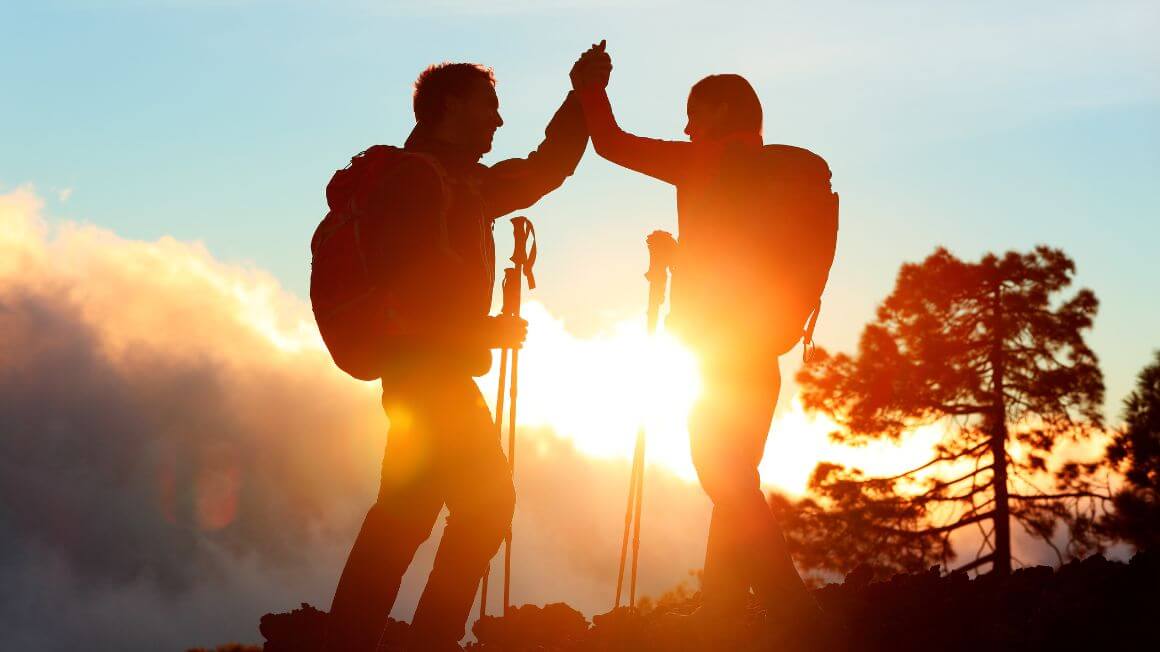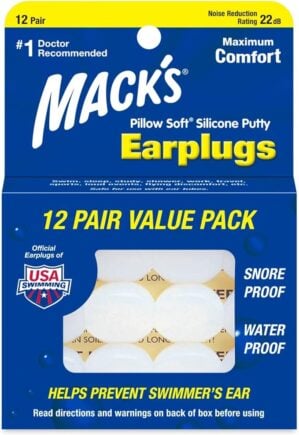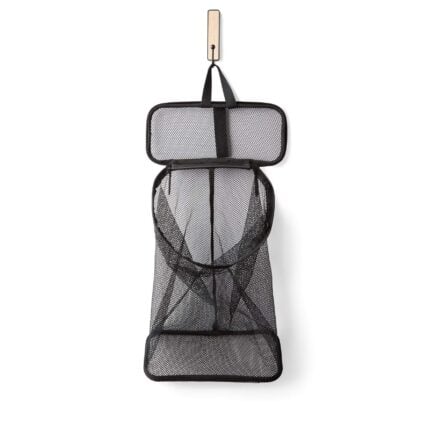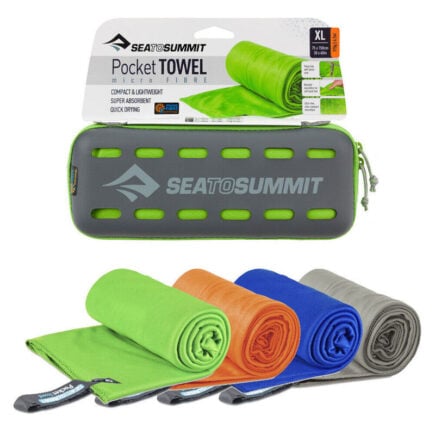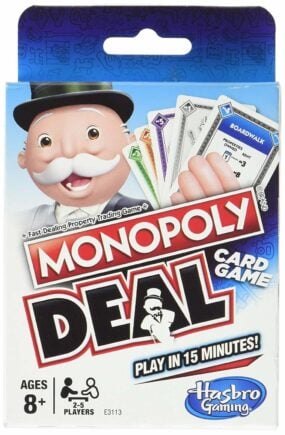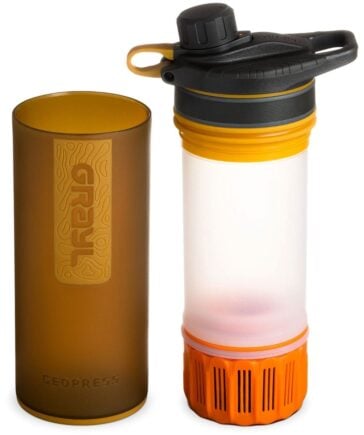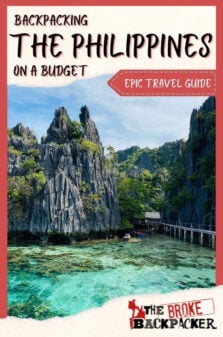With seven thousand islands to explore, backpacking the Philippines is a different experience from travelling around the rest of South East Asia. The Philippines is a vast country stretching across the North Pacific Ocean; a land of pirates and smugglers, ancient tribes and mysterious jungles, active volcanoes and chocolate hills, epic parties, and uninhabited islands. You simply cannot go wrong with backpacking in The Philippines.
Cheap beer, beautiful beaches, adrenaline pumping activities and some of the most friendly, genuine, people in all of Asia; the Philippines truly captured my heart. I made some incredible friends in the Philippines and I have to say, it is one of the easiest countries in the world to travel around as the locals are so friendly.
I was in The Philippines for just a month on my first trip and six weeks on my second trip. I plan to return for at least three months as part of my next adventure and I managed to see some truly stunning sites despite only being there for a short period of time.
So Amigos here is an awesome guide to Backpacking the Philippines. With this, you’ll have everything that you could possibly need to ace this country and have the time of your life. Enjoy!
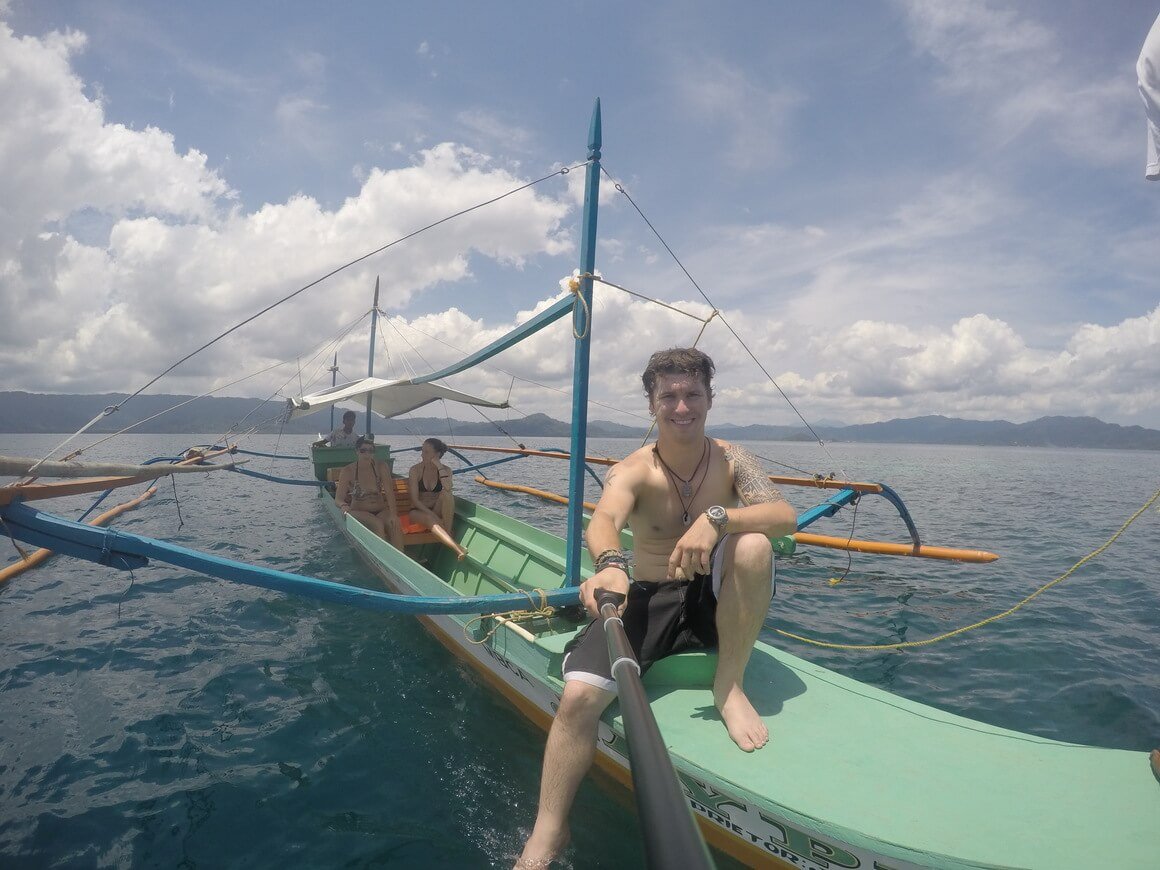
Photo: Will Hatton
The Broke Backpacker is supported by you. Clicking through our links may earn us a small affiliate commission, and that's what allows us to keep producing free content 🙂 Learn more.
Why Go Backpacking in the Philippines
With thousands of islands to choose from, you can spend your lifetime in the Philippines and never see it all. If you can stay in the Philippines for more than a month, you should be able to visit at least most of the major tourist hotspots. That said, it will require some careful planning and might prove to be quite intensive.
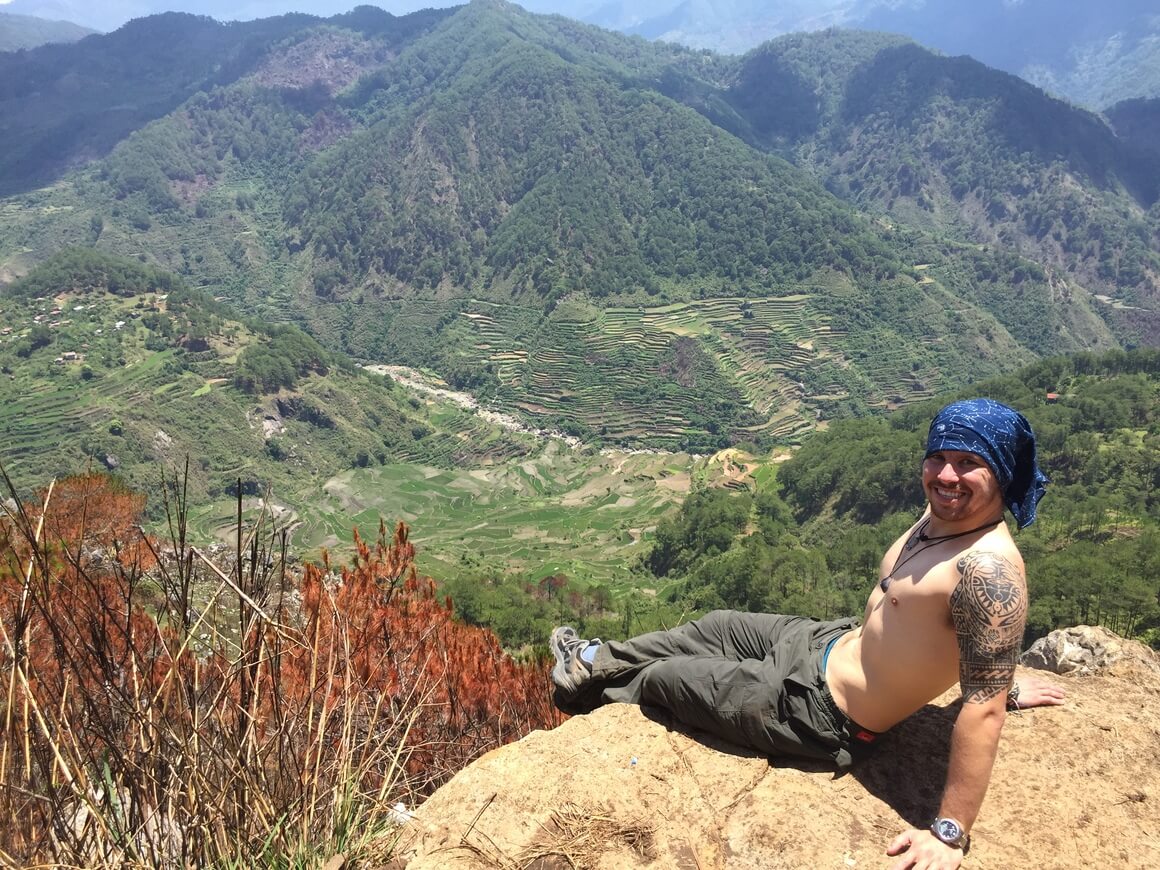
Photo: Will Hatton
No matter where you go, you should be able to find some beautiful beach and epic diving. Palawan and Cebu are the most famous spots in the Philippines, but you don’t have to look much farther to get off the beaten path!
- Best Travel Itineraries for Backpacking the Philippines
- Places to Visit in the Philippines
- Top Things to Do in the Philippines
- Backpacker Accommodation in the Philippines
- The Philippines Backpacking Costs
- And Speaking of Plastic… Get an eSIM For Philippines
- The Best Time to Travel to the Philippines
- Staying Safe in the Philippines
- How To Get Into The Philippines
- How To Get Around the Philippines
- Working in The Philippines
- What to Eat in the Philippines
- Culture in The Philippines
- Some Unique Experiences in the Philippines
- Final Advice Before Visiting The Philippines
- Buy Us a Coffee!
We have designed three epic itineraries that have the potential to be combined if you have enough time (and a chance to extend your visa). The third itinerary can be completed on a one month visa, or split into two if you have less time!
The Philippines is a super popular destination for newlyweds so if you and your beloved are heading here to celebrate your recent nuptials, be sure to check out Honeymoon backpackers ultimate guide to enjoying your honeymoon in The Philippines.
Backpacking the Philippines 10 Day Itinerary #1: Sagada
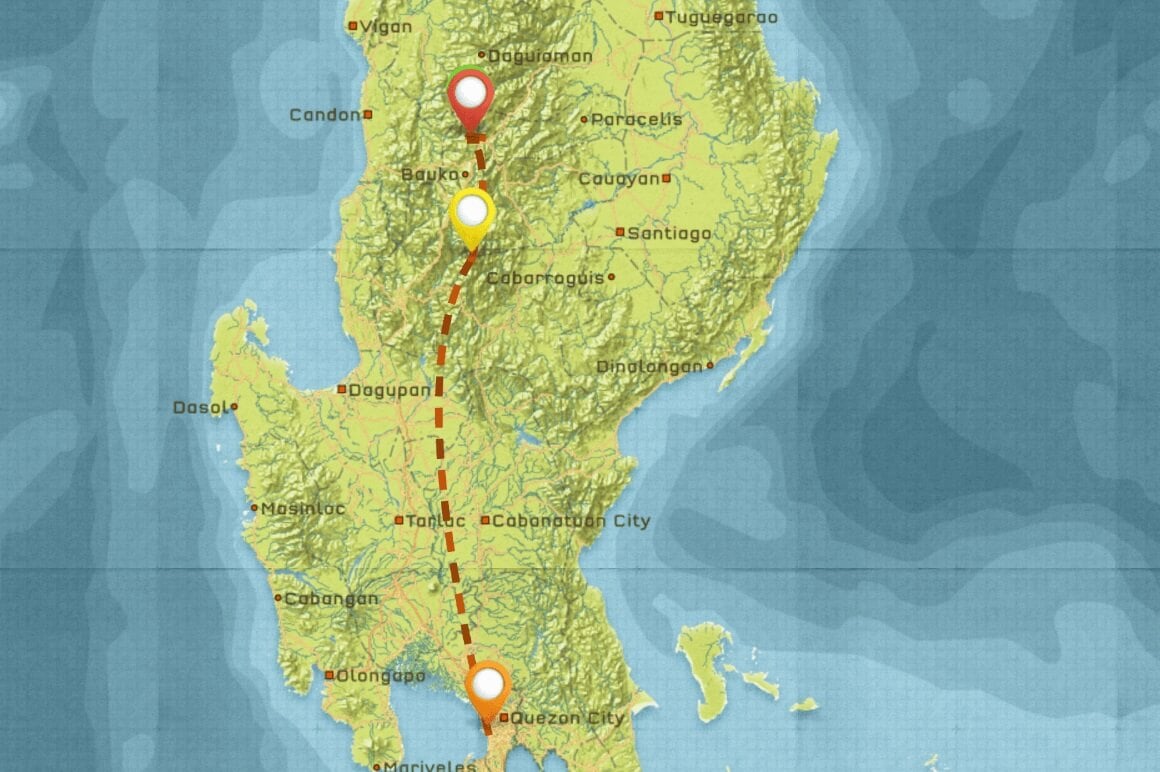
While most people head south for Palawan, consider this adventurous 10-day itinerary instead (or add it on to the next itinerary). Start your trip to the Philippines staying in the capital, Manila. From here, you can take a six-hour bus journey to the legendary Mt Pulag and the truly stunning sea of clouds. Not quite a mountain, the trek to the summit is typically done over two days and is very, very easy.
Continue on to Sagada (about a 4-hour bus journey) afterward for some non-stop adventure. Go hiking and camping in the hills, try your hand at rock climbing, visit Bokong Falls or the eerie hanging coffins – a local tradition.
For even more of an adrenaline rush, make sure to go caving and spelunking in the surrounding caves. The most popular is the Cave Connection tour, which takes you from Lumiang Cave through Sumaguing Cave.
The Philippines 3 Week Itinerary #2: Palawan
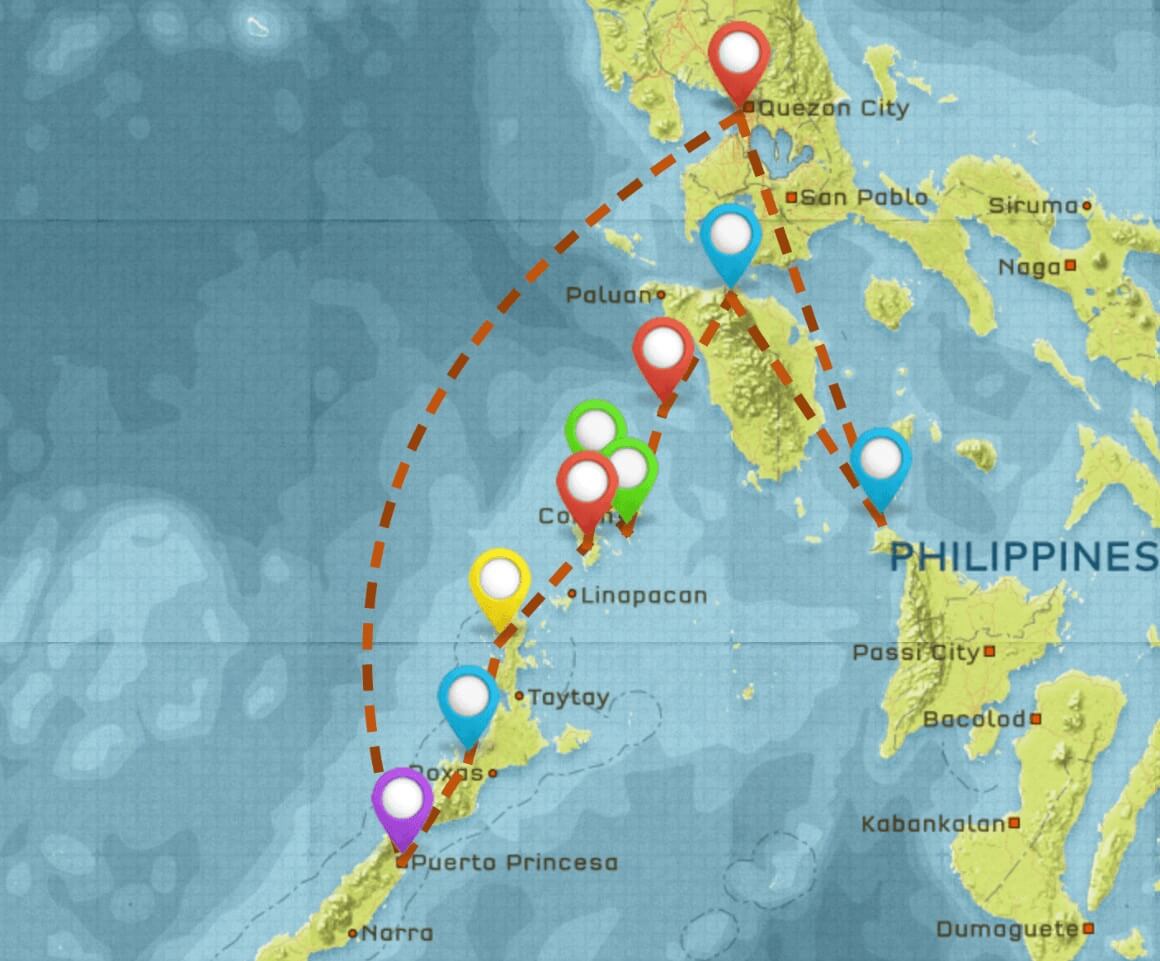
This is the best Philippines itinerary for diving fanatics or those wanting to experience the sheer natural beauty the Philippines has to offer. If you have 4 weeks, you can slow down and stay in places for longer.
Fly to Puerto Princesa area, and leave pretty quickly to get over to Port Barton. This area has several islands with good beaches and snorkeling.
Next, travel to the El Nido, known for its island hopping. If you have the money, you can arrange an expensive boat ride to Tubbataha Reef Marine Park, known for its pelagic marine life.
Take a ferry to Coron, which is famous for its WWII wreck diving. If you are a diver, take a day or two to explore the nearby Apo Reef as well. You can also check out other islands off the beaten path, like Culion Island and Busuanga Island. From what I’ve heard it’s nothing but huts, beautiful beaches and diving.
Ferry again to Puerto Galera. I have heard this area decent local dive scene and is easy to reach from Manila. You can end your trip with a visit to Boracay if you have some time. It’s a bit out of the way, but easy to reach from Puerto Galera. This is one of the most famous beaches in the Philippines due to its incredible sand.
The Philippines 4 Week Itinerary #3: Diving and Surf
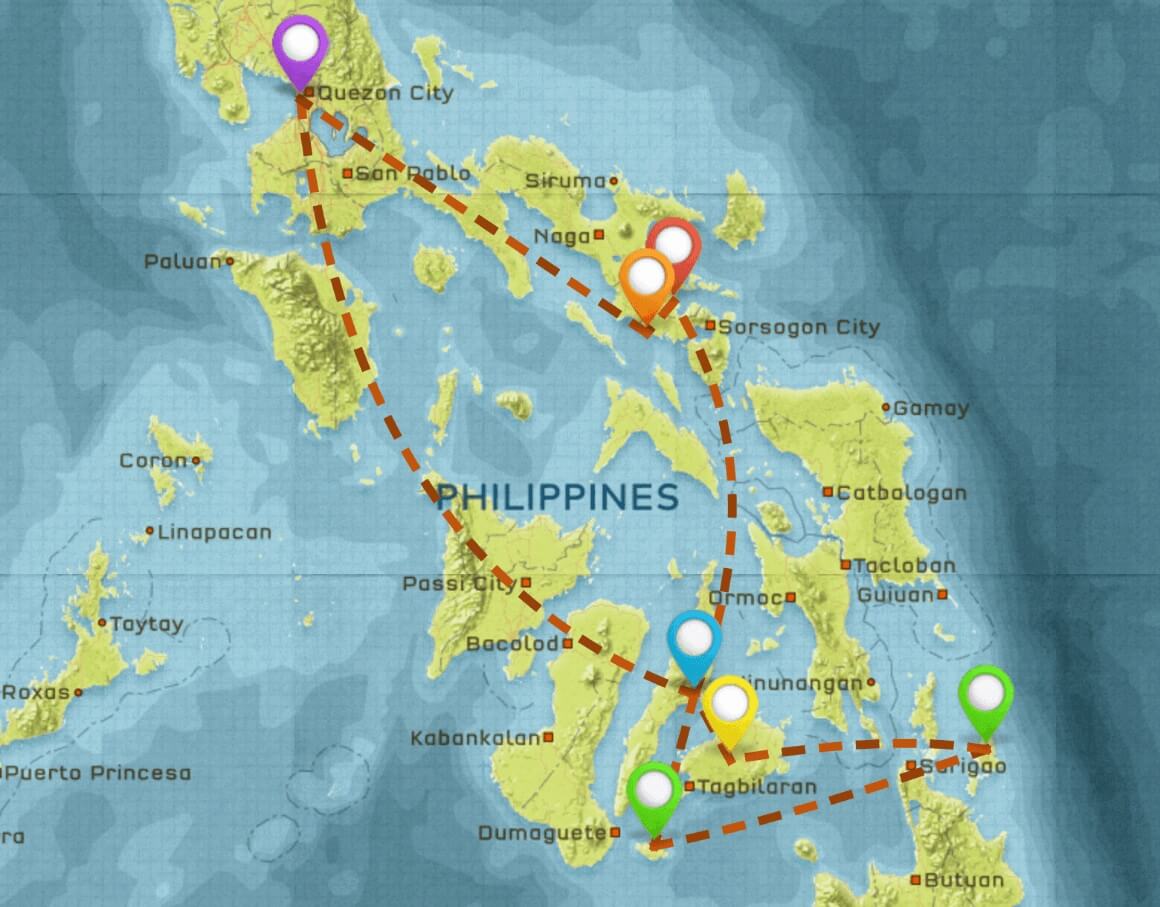
Catch a flight to Cebu from Manila. Chances are you came here to see the incredible Kawasan Falls. Badian is located 98km southeast of Cebu and is well known for its thrilling canyoneering experience. You can catch a habal habal from Dalaguete to Kawasan Falls/Badian, for 200p per person.
Next, let’s get off the grid a bit and head to Siquijor Island, which used to be known for its witch-like healing practices. Siquijor has amazing snorkeling and diving too. There are tranquil waterfalls, caves and forests to explore on the island. This is a great island to lay back and chill with a beer.
Afterward, take a trip to Siargao Island, best known for its surfing and wild, sandy beaches, soothing lagoons, coral reefs and limestone formations.
Ferry across to Bohol (and Panglao Island for the beaches), another diving hot spot with some great dive schools – check out our favourite, Diving Squad. You can also hike in the famous chocolate hills here, and motorbike around the area with ease. This is also one of the only places in the world to see the Tarsier, you know those tiny, giant-eyed primates no larger than a child’s fist?
Don’t forget to spend some time exploring Panglao itself, it’s a great place to chill mid-way through your adventure.
Catch a quick flight or a long overnight ferry to Legazpi, home of the most perfect cone-shaped volcano in the world, Mt Mayon. This town is also used as a gateway to dive with the Whale Sharks in Donsol. You can hike to the summit of Mt Mayon, but it’s quite a difficult climb.
It’s super cheap to free dive in Donsol and it’s a magical experience! Diving in Donsol is also quite popular, particularly in the Manta Bowl.
Want to save money on accommodation?
Enjoy 20% OFF on stays ALL around the world.
Backpacking Manila
Chances are, your Philippines backpacking route will begin in Manila. A bustling metropolis, Manila is filled with vibrant neighbourhoods to explore, fancy shopping malls, trendy bars, beautiful people, and fancy restaurants. The wealthy and the poorest live next door to each other and it can be pretty shocking for first-time travellers.
I only spent a few days exploring Manila once landing, and a few more when I had to pass through on my way to another island. There’s plenty to do in Manila, but ultimately get out as soon as possible and spend your time exploring the rural and island areas of The Philippines. I stayed in a couple of hostels in Manila, as I passed through three times, the best was without a doubt Z Hostel.
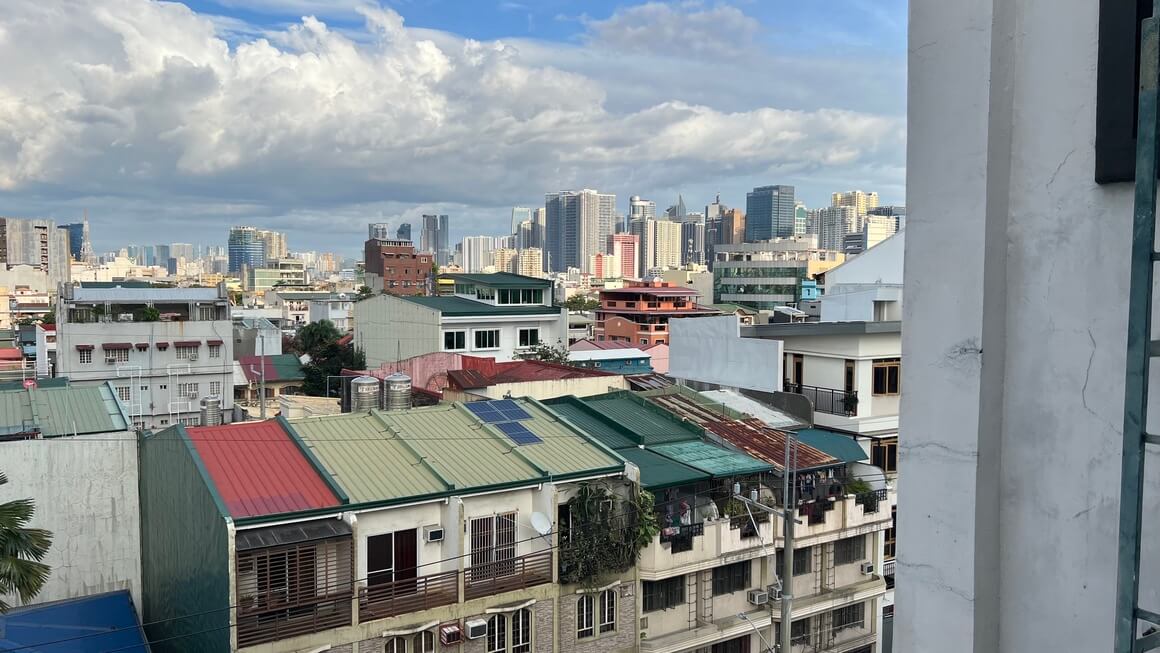
If you do choose to spend some time exploring the bustling Manila, check out Fort Santiago. Around seventy five pesos to get in, the Fort guards the entrance to the Pasig River with an oasis of gardens, plazas and fountains leading to its arched gate and lily pond. Explore the fort inside and even head down to the creepy cell blocks or relax in the museum. It’s essentially a shrine to The Philippines national hero, José Rizal. You can easily kill a day here without getting bored, and I highly recommend checking this out.
Want more history about The Philippines and the people? Check out the National Museum of the Filipino in Manila. It costs around a hundred and fifty pesos to get into this museum and it’s worth it. Since 1998, the National Museum has been restoring and safeguarding important cultural values, sites and reservations throughout the Philippines. Super interesting and chilled, and perfect for those history nerds like me!
If you want to party and meet lots of locals, Manila is a good place to start. While a bustling capital, Manila is still safe to visit and an awesome place to let loose a bit. It’s also the perfect hub to fly anywhere you want domestically in the Philippines!
If you’re looking for somewhere close to the city to escape the chaos, then check out the sick Airbnb’s in Tagaytay. In fact, it’s a great place to take a day trip and there are plenty of options if you’re looking at where to stay in Tagaytay.
There is also Pasay, just outside the capital. It’s a great spot to try if you’re looking for somewhere more chill. Plus, there are heaps of great Airbnb’s in Pasay too.
 Find the best areas in our Where To Stay in Manila Guide.
Find the best areas in our Where To Stay in Manila Guide.
 Plan your perfect Manila Itinerary.
Plan your perfect Manila Itinerary.
 Find a bed in our Hostels in Manila post.
Find a bed in our Hostels in Manila post.
 Why not rent your own pad? Check out Manila Airbnbs.
Why not rent your own pad? Check out Manila Airbnbs.
Backpacking Mt Pulag
A six-hour bus journey from Manila is the legendary Mt Pulag, and the truly stunning sea of clouds. Not quite a mountain, the trek to the summit is typically done over two days and is very, very easy. Marked by clear trails and signs, you’d have to be really trying to get lost. Mount Pulag attracts hikers from all over the world.
The third highest peak in the Philippines standing at 2,922 metres above sea level, you know it’s going to offer some epic views at the top. You are technically ‘not allowed’ to hike this mountain without a guide. I booked my Mt Pulag trip through Travel Cafe, the cheapest and best tour guides out there. You’ll likely need to base yourself in nearby Baguio for at least one night or you’re going to be knackered! Thankfully there are some great Airbnb’s in Baguio where you can rest up.
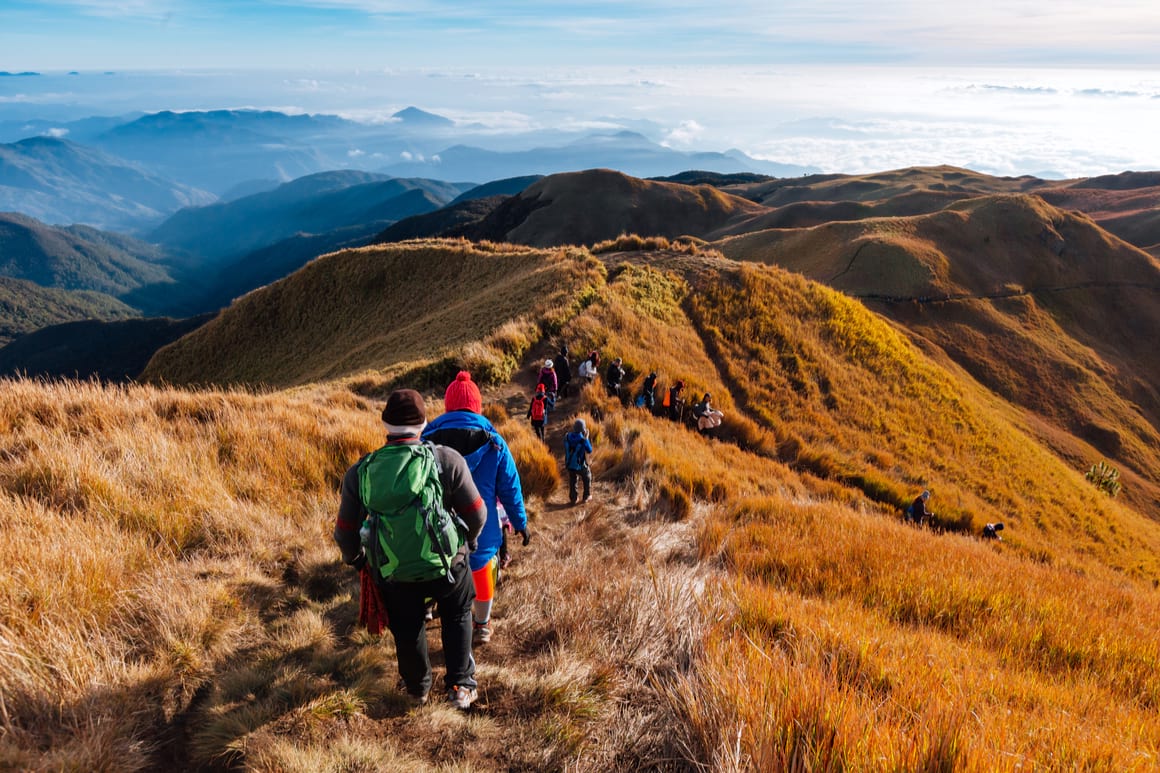
It’s not just the beautiful sea of clouds that attracts people to climb Mount Pulag’s summit… Have you ever seen the Milky Way Galaxy at dawn? I hadn’t until waking up (super) early, hiking to the summit and being greeted with the most incredible sky I’d ever seen. No wonder they say to do this hike over two days… Hiking under the Milky Way Galaxy and eating breakfast as the sun pushes through the sea of clouds was one of the best things I experienced backpacking the Philippines.
Backpacking Sagada
Sagada is a four-hour bus ride from Baguio or overnight from Manila. Welcome to the adventure capital of the Philippines! This is hands down one of my favourite places I explored in all of The Philippines.
I crashed in Olahbinan – an amazing place with warm vibes and an epic view from the balcony. It’s opposite Kimchi Bar; which happens to be the best place to hang in the evenings for a beer or three…
Sagada has everything, from relaxed day hikes into the hills, advanced treks into the mountains, and for the adventurous, caving. Travelling to and exploring Sagada’s secrets is a recommendation for anyone visiting the Philippines.
The Crystal Cave is an explorer’s paradise. Spend the day squeezing through tight black holes, climbing raging waterfalls, abseiling further into the darkness before being led into another chamber filled with mammoth crystal formations. Expect to pay around 2,500 Pesos to hire a guide to take you through not only Crystal Cave but also the cave link connection. If you are new to caving, I suggest starting the cave link connection, parts of the Crystal Cave are tough.
Want creepy and cool? Check out the Echo Valley and the Hanging Coffins. Paganism before the 20th Century was the prominent religion in The Philippines, and Filipinos believed the dead had to be close to the gods to help reach their final resting place. So, instead of being buried in the ground, coffins were secured to the sides of mountains.
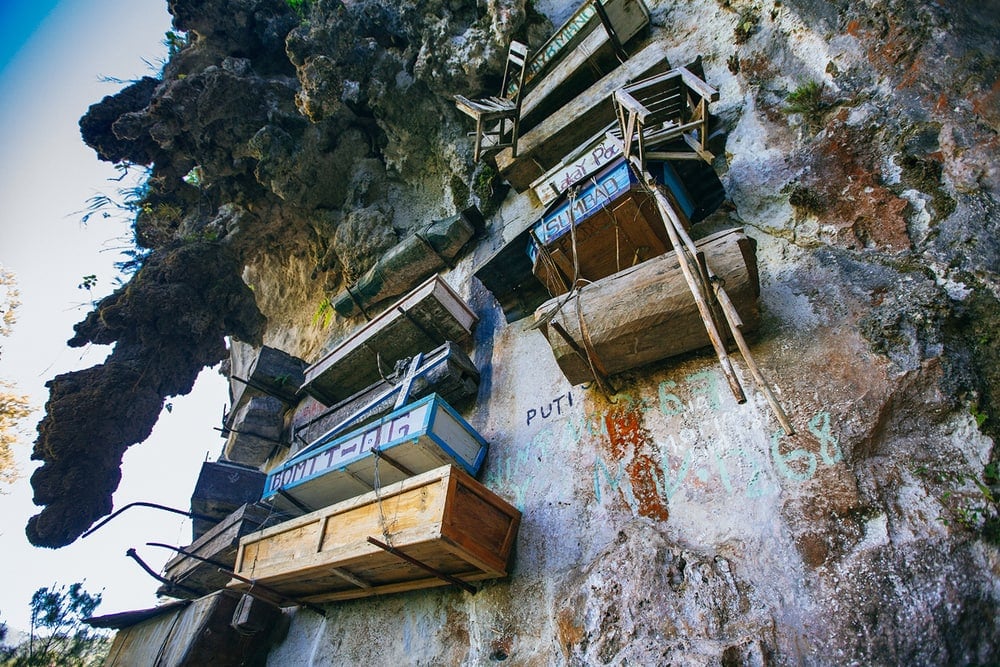
You can hire a guide for 200 pesos to take you in or do the loop in reverse and you won’t have to pay to enter… if you get lost though you are pretty fucked so be sure you know where you’re going. Today, locals are sometimes still buried in the foetal position in these hanging coffins but it’s very expensive – a sacrifice of twenty cows and forty chicken are required – so the practice is dying out.
One of my favourite things to do in Sagada is to simply take to the hills and hike for an afternoon. The trails are so quiet I could venture for a day and see no one, having the countryside all to myself! Stunning views, great weather and deserted trails were the only reasons I needed to venture out to the wilderness.
I spent a lot of time staying in the Sagada area, and I recommend it to everyone backpacking the Philippines who wants to escape the tourist trap. Those looking for adventure should head here.
Backpacking Puerto Princesa
From the Kalinga Jungle, I travelled to Manila to catch a cheap flight to Puerto Princesa; the gateway for Palawan and the underground river. I spent a few days here visiting the underground river.
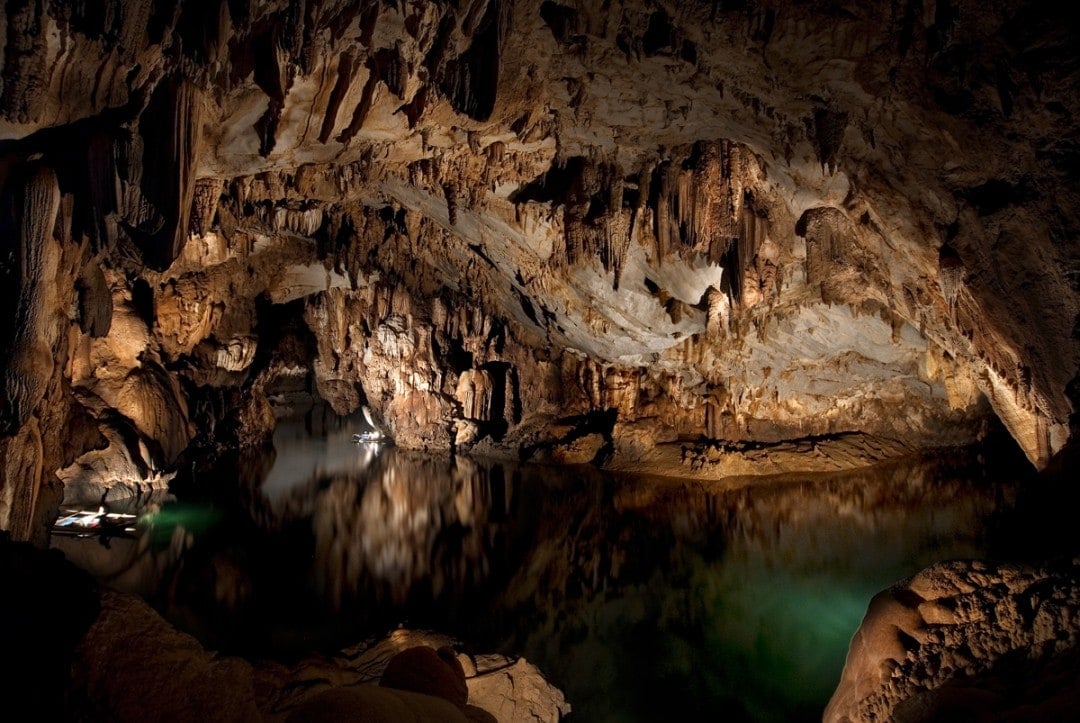
The awesome Sheebang Hostel was a great place to meet some more backpackers! It was beautiful, there’s no denying that. Floating underground, blue water and waterfalls were just incredible, but the amount of people that flock here didn’t make me want to hang around for long…
Puerto Princesa itself is a bit of a concrete jungle. While backpacking in Palawan I used it as a base to get to the national park and islands nearby. Unless you are a massive foodie (good restaurant culture here) move on quickly…
Backpacking Port Barton
Does the idea of white beaches, crystal clear water, small seaside towns, fresh fish feasts and camping on the beach sound like heaven to you? Well, that is just what Port Barton is. Seriously, it’s one of my favourite Philippines backpacker spots. It is a little bit of a mission to get here from Puerto Princessa; I screwed it up and ended up paying through the nose to catch a boat after being dropped in the middle of nowhere by an unfriendly bus driver.
You can catch a bus all the way to Port Barton from either Puerto Princesa or El Nido. Just beware the journey rather bumpy; however, they’re currently building a proper road which should be finished shortly. Your other option is to catch a ferry here from Sabang, where the Puerto Princesa Underground River is located.
Port Barton itself is well worth the effort though; a sleepy fishing village just a stone’s throw away from uninhabited islands where you can snorkel and even stay overnight.
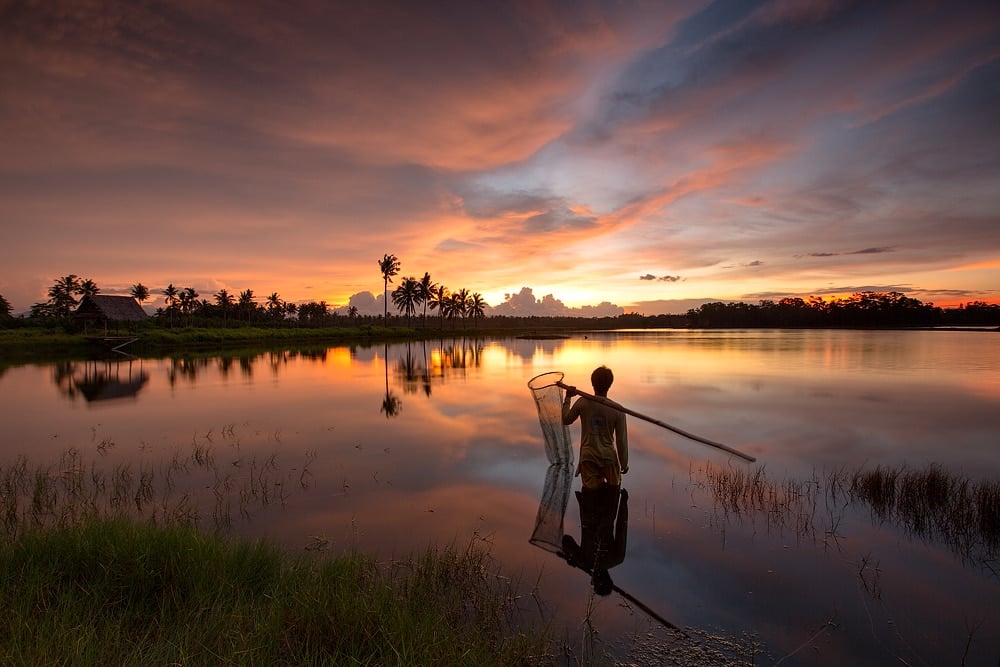
Gaga, a local fisherman, can hire out tents and will arrange for you to crash on an island for a night, complete with a cooked fish dinner, for as little as $30 a person. You can reach him on (0949) 467 2204 – Tell him I sent you and he will reward you with one of his legendary smiles. What’s better than this, seriously?
If you’re not keen to camp, there are lots of cheap places to crash in Port Barton, but I recommend blowing your backpacker budget one night and heading out to White Beach. A small resort, totally deserted with gorgeous beaches, crackling bonfires and swaying palm trees; making for a magical evening! It’s possible to walk here from the main beach, it only takes around two hours. Sunshine House, on the main beach, has good Filipino food, fast internet and cheap rooms.
Backpacking El Nido
El Nido is one of the most popular spots for those backpacking the Philippines to visit. The beaches are known for their epic parties, white sand, and blue waters; everybody ends up at visiting El Nido one way or another…
Head out on one of the epic island hopping cruises, show off your backflip skills jumping from the boat into crystal clear waters below. Snorkel the reefs or if you dare, swim through the underwater caves found in the lagoon. The underwater caves are hard to find, so ask the local lads to show you; it’s in the lagoon and although dangerous is a lot of fun.
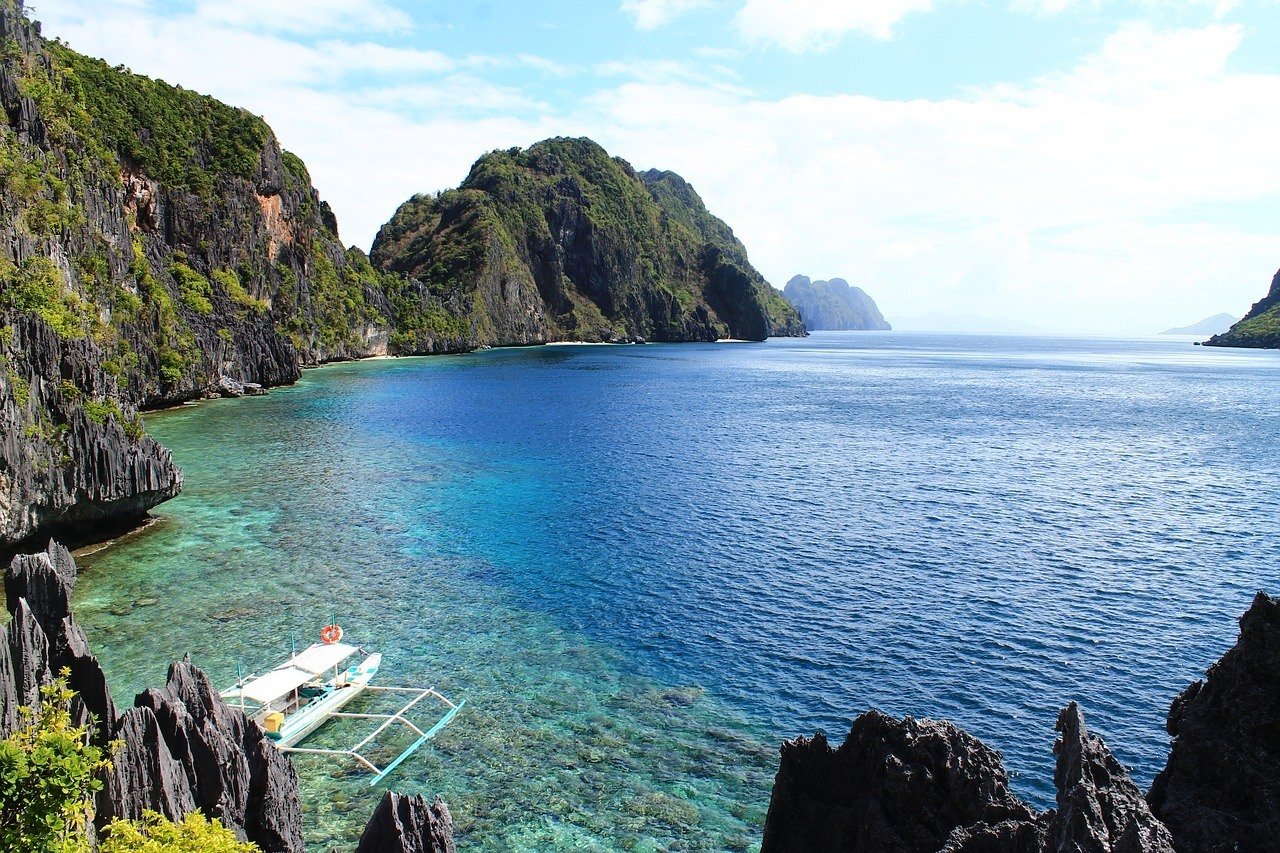
Fed up of Water sports? El Nido is one of the best places in The Philippines to climb. The cliffs overhanging the ocean offer so incredible views from the top which even the beginner climbers can enjoy. Check out Taraw Peak, one of the coolest climbs in El Nido.
If you can afford the expensive boat ride, diver fanatics should make their way to Tubbataha Reef Marine Park, known for its reef and pelagic marine life. .
There are tonnes of epic backpacker hostels in El Nido, HOWEVER, you will have to book in advance in high season as it’s super popular. El Nido is super easy to get to, you can get direct transport here from Puerto Princesa and Port Barton or a ferry from Coron.
Backpacking Coron
Named one of top dive spots in the world, Coron is popular for its World War II wreck diving. In September 1944, a fleet of Japanese ships hiding in the harbour were sunk in a daring raid by the US navy. The result is around ten well preserved underwater shipwrecks surrounded with coral reef: a divers paradise!
For those not keen on exploring these wicked wrecks, Coron is a great place to kick back with a beer or two for the day. There are numerous chill places to stay in Coron and a lot of cool areas to explore.
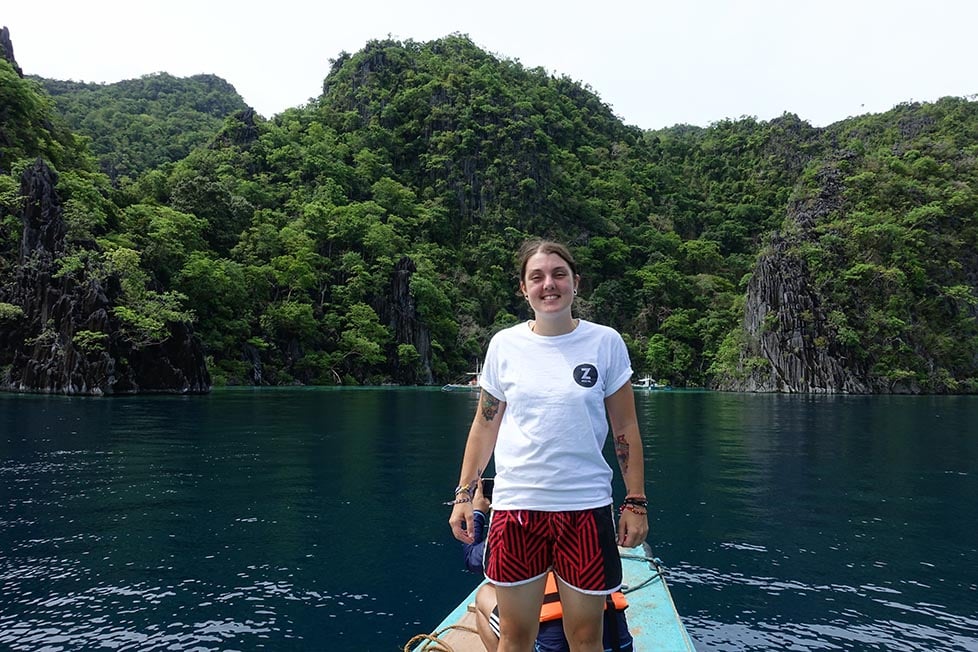
Image: Nic Hilditch-Short
Backpackers rejoin—Coron is a gem on the Philippines backpacking route. There are tons of cool hostels, bars and unpretentious island living that backpackers go crazy for.
You get to Coron from El Nido by ferry, which takes around eight hours or fly directly here from Manila or Puerto Princesa. Flights are cheap if you book in advance, otherwise, get your haggling game on! I got the price down to a thousand pesos, way cheaper than advertised!
Explore Coron by motorbike and see it’s beauty. There are heaps of things to do in Coron, but diving was what attracted me here!
Backpacking Legazpi
Legazpi is home of the most perfect cone-shaped volcano in the world, Mt Mayon and used as a gateway to dive in Donsol. You can hike to the summit of Mt Mayon, but it’s quite a difficult climb. Some companies offer an extremely expensive 2-day expedition, however, it does seem possible to climb it yourself too. If hiking isn’t your thing, hire an ATV and fang around the base of the volcano looking for wicked viewpoints like at Sumlang Lake.
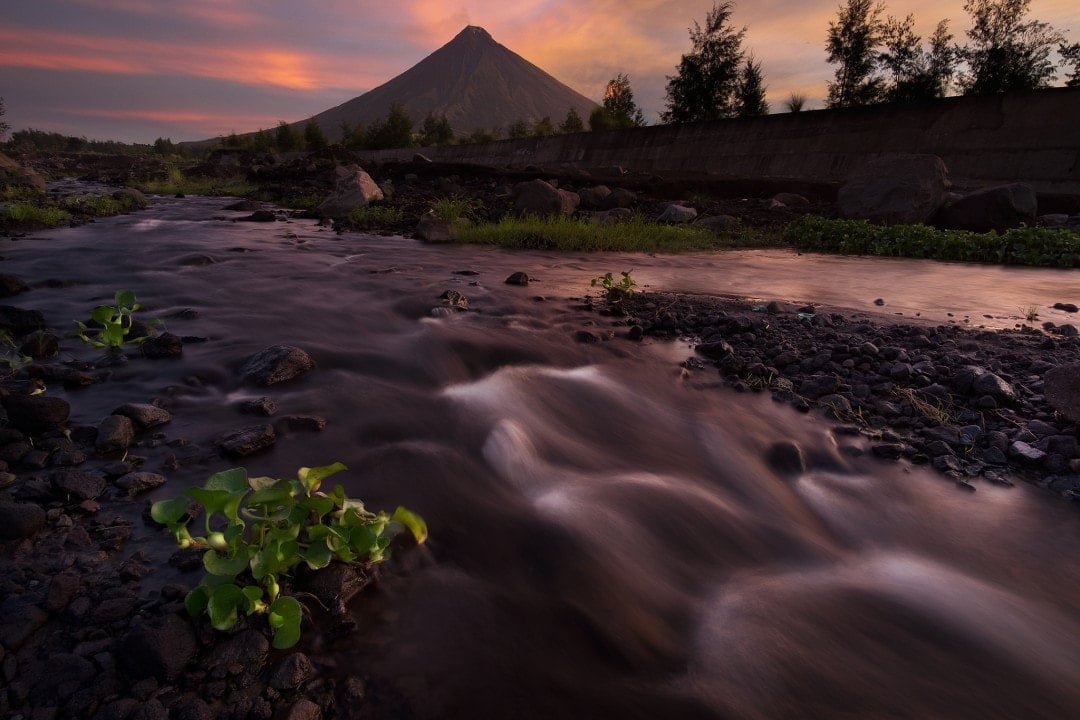
The most popular viewpoint of Mt Mayon is Lingnon Hill, but it’s pretty touristy. To get here on public transport, catch a loop 2 Jeepney from the main road in town. It drops you near the top of the hill and will only set you back 10p.
The Cagsawa Ruins are pretty cool to check our while you’re here. They’re the remains of a small 18th-century church village after the huge eruption of Mt Mayon. I stayed at Mayon Backpackers Hostel which has a cool view from the rooftop and even has a kitchen to cook your own food. Pretty much all the flights here go via Manila, check out Cebu Pacific for cheap sale deals.
Backpacking Donsol
Donsol is famous for the Whale Sharks as they pass through the bay during their migration. It’s one of the few places in the world where you can dive with them in their natural environment, unlike in Cebu where they’re hand fed and never migrate. Whale sharks are drawn to Donsol Bay from November to May, due to the high concentration of krill and plankton.
Though I recommend that you avoid the tours altogether: animal tourism is a tough line to toe. It’s just as good to hire a snorkelling kit and get out on the reefs without the worry of whether the tour is ethical or not.
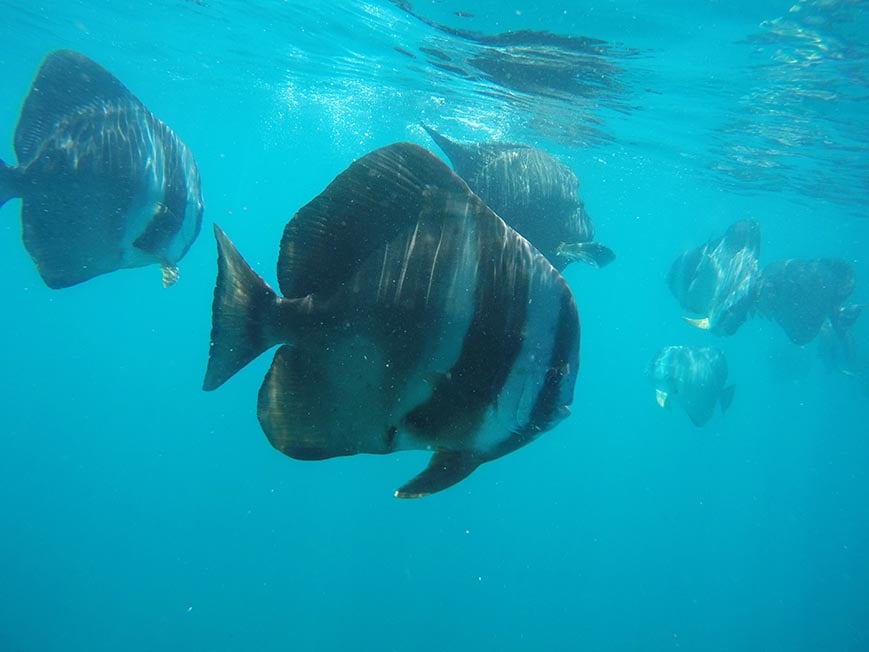
Image: Nic Hilditch-Short
Diving in Donsol is also quite popular, particularly in the Manta Bowl where you can see both manta rays and whale sharks. However, it is a decent boat ride to get there and can be pricey if you’re diving solo. Your best bet is rallying together a few divers and share the cost of the boat rental. To get here from Legazpi is super easy: just go to the bus station and catch the Donsol Bus.
It takes about 2 hours and costs only 75p. The cheapest way to get to Cebu from Donsol is by local ferry from the Pilar Port. This will take you to Masbate, where you change to a night ferry onwards to Cebu City. All up the ferry ride should cost just under 100p. If you prefer to fly you have to head back to Legazpi and fly via Manila as there are no direct flights to Cebu.
Backpacking Cebu
Cebu city is much like Manila, but it’s smaller and the traffic isn’t as bad. I’m not the biggest fan of big cities, so I didn’t enjoy the city itself so much. The best area of Cebu to stay in is the south, and you’ll probably need around 5 days to a week to travel and see everything. You can fly directly to Cebu from either Manila or Coron; however, your best and cheapest bet is to catch a ferry from Donsol.
I’d definitely stop into Dalaguete, also known as “little Baguio” and is renowned for its cool climate, vegetable crops and has a beautiful viewpoint at Osmena Peak. Head to the Cebu South bus terminal and catch a 2 hour bus to Dalaguete; it should cost about 100p.
If you’re a conscious traveller and wish to balance travelling and the need for the environment, don’t go to Oslob. Yes, it’s famous for swimming with Whale Sharks, but no, it’s not good for the animals or their environment.
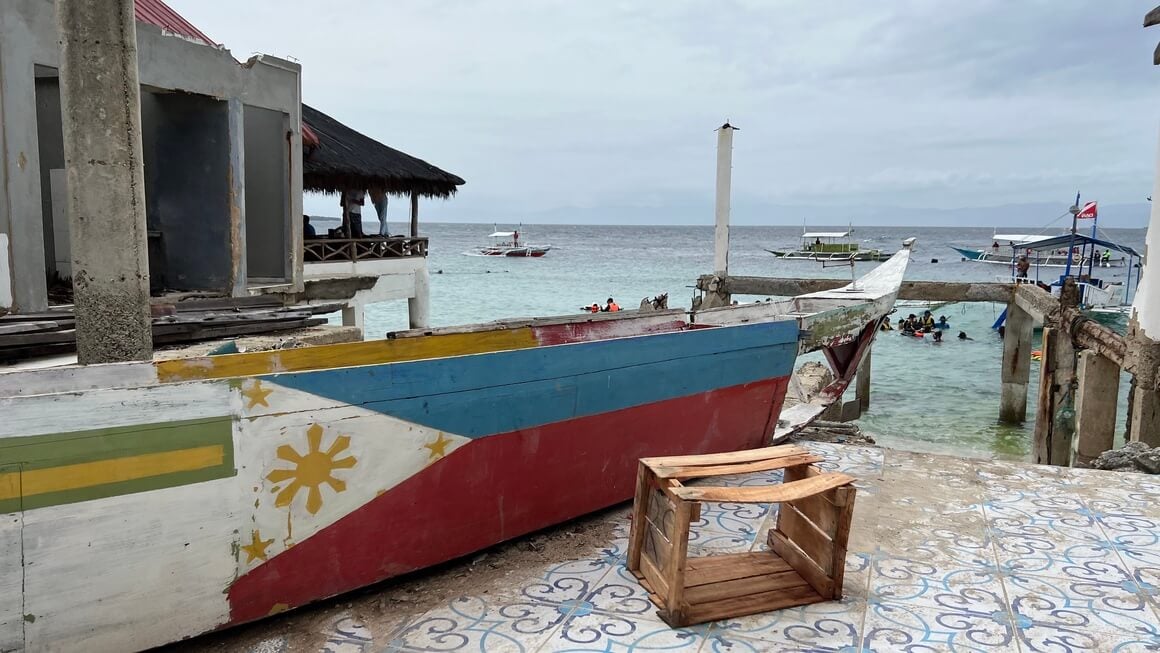
Photo: @joemiddlehurst
If you’re in Cebu chances are you came to see the incredible Kawasan Falls. Badian is located 98km southeast of Cebu and is well known for its thrilling canyoneering experience. Most backpackers do either a day trip, or canyoning tour finishing up in Kawasan Falls. You can catch a habal habal from Dalaguete to Kawasan Falls/Badian, for 200p per person, entry to the fall is only 30b.
Moalboal is south of Badian and has some of the most incredible dive spots and coral reefs. It’s a chilled laid back beach town 2.5 hours south of Cebu city. You can catch a bus directly from Badian or from the south bus terminal in Cebu city for 200p.
 Be sure to visit Cebu’s highlights.
Be sure to visit Cebu’s highlights.
 Craft your own perfect Cebu itinerary.
Craft your own perfect Cebu itinerary.
 Find a bed with our Cebu Hostel Guide.
Find a bed with our Cebu Hostel Guide.
 Why not rent an entire Cebu Airbnb?
Why not rent an entire Cebu Airbnb?
Backpacking Siquijor Island
Siquijor Island is one of the best islands in the Philippines. It’s absolutely beautiful and used to be known for its witch-like healing practices, though today most healing is done with a relaxing beer on the beach and dip in the ocean. It’s one of my favourite backpacker hubs in the country thanks to it’s social and family-like hostels. If you’re wondering where to start your trip in the Philippines, this is it!
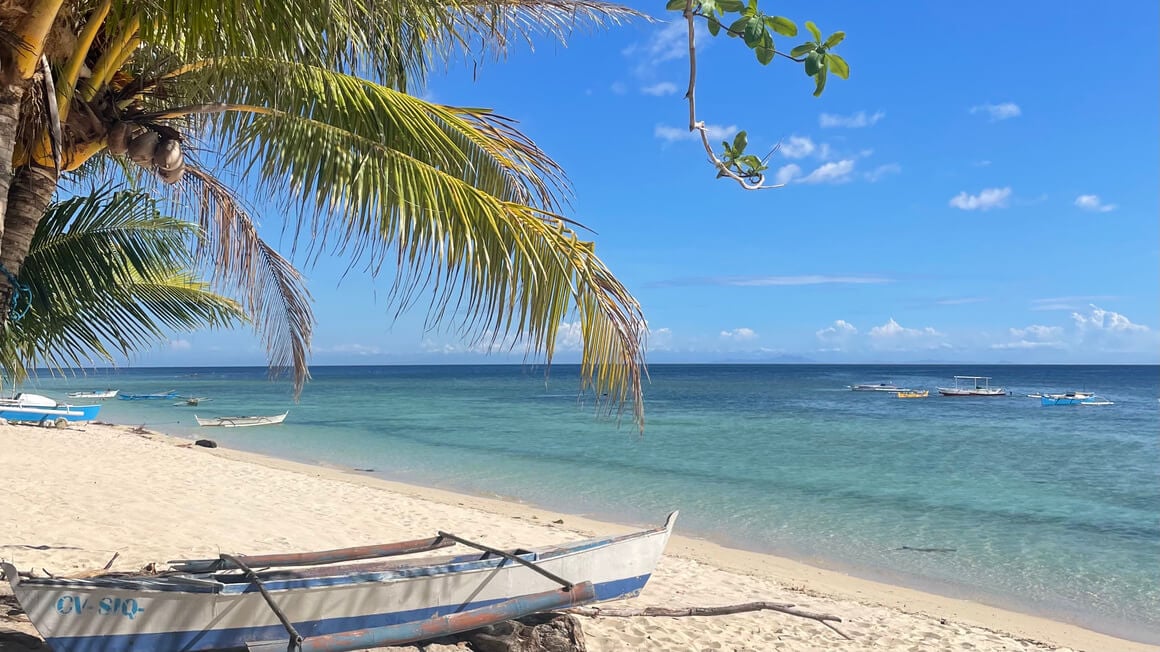
Photo: @danielle_wyatt
The island also offers a range of accommodation options, suiting all preferences and budgets. Make sure you have a comfortable and convenient place to stay.
Siquijor has amazing snorkelling and is great for diving too. There are tranquil waterfalls, caves and forests to explore around the island. Just beware of the sea urchins, especially during low tide, if you get one in your foot they hurt for days!
To travel to Siquijor Island from either Cebu or Moalboal catch a bus to the Lilo-An Port in Santander then take a ferry across to Siquijor. Siquijor is a really laid back chilled island, I absolutely loved the vibes here.
Backpacking Siargao
Siargao known as the surfing capital of the Philippines is located about 800km southeast of Manila, also known as Cloud 9. But you don’t have to be a surfer to enjoy the incredible white sand beaches, soothing lagoons, coral reefs and limestone formations. The town has a chilled, laid back island feel, with beautiful scenery and natural attractions all around the island.
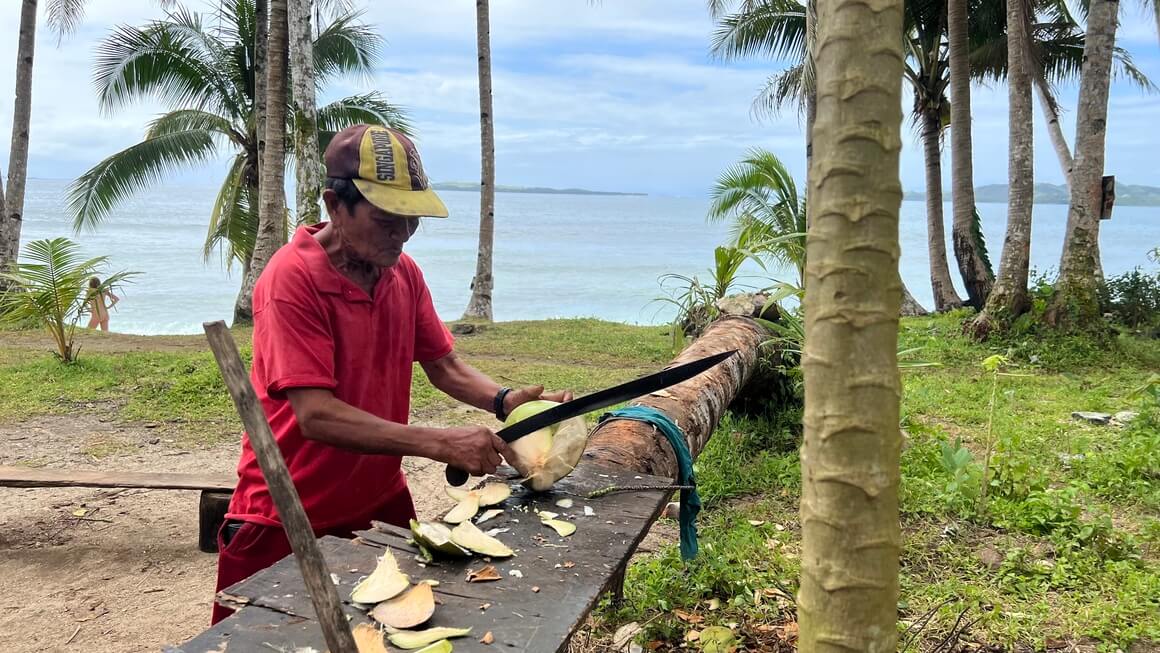
Photo: @joemiddlehurst
Most backpackers stay in the General Luna area as it’s a lively part of the island and one of the best places to stay in Siargao. I’d recommend finding a quiet spot around the island to camp for free. Otherwise, there’s a few surf camping grounds and plenty of hostels around the area. To get here and away, you can either fly directly to the island or fly to Siargao city and take a ferry across to Siargao island.
Backpacking Boracay Island
Boracay Island is something that you see on a postcard: beautiful powdered white sand beaches and crystal clear blue water as far as the eye can see. The sunset on the white beach is absolutely breathtaking, the nightlife here is awesome!
It’s a pretty commercialised and can be rather expensive, but you can defiantly find cheap backpacking options if you know where to stay in Boracay. The cheapest drinks on the island are at Kurt and Mags on the beach in station 3, cocktails are 45p and beers are 35p!
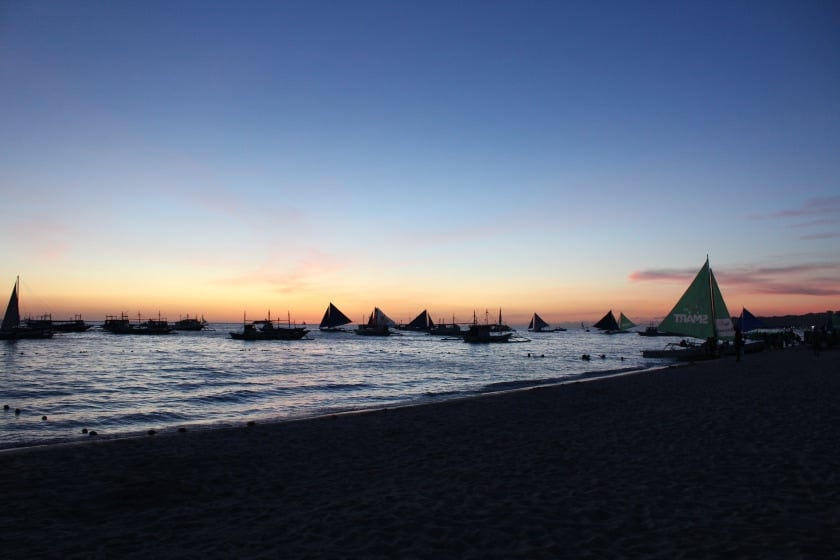
Make sure you get to Ariels Point! It’s all you can drink and eat while you spend the day cliff diving, kayaking, snorkelling and partying. My favourite place on the island is Spider House. Spend the day paddle boarding, jumping into the water and watching the sunset over the horizon.
To get to Boracay you will either fly into Kalibo or Caticlan airport and get the ferry over to Boracay Island. You can snag cheap flight for around $40 USD and the ferry from Caticlan Pier is 200p.
Backpacking Batanes
Batanes is pure paradise and so much more accessible to backpackers these days. The increase in daily flights heading to Batanes have led to promo fares popping up with most budget airlines. If you get your flight on sale, it’ll set you back around P500 from Manila, so it’s not that expensive to get here anymore.
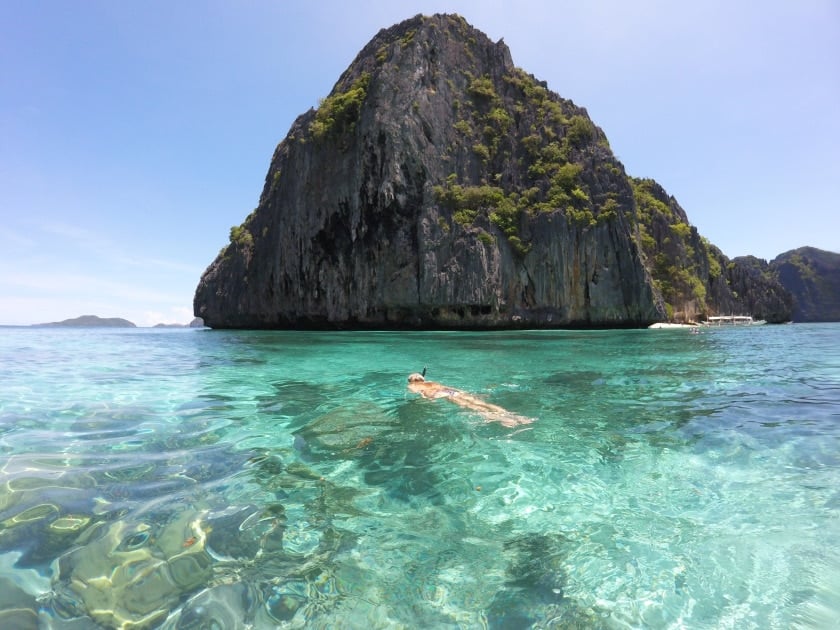
You can explore the north and south of the island by tricycle for P200 an hour, or hire a bicycle or motorbike. Make sure you visit Sabtang Island; you’ll probably have to get a tour so shop around and find the best deal. Its super beautiful in Batanes: the beaches have white sand, the viewpoints are incredible, and blue turquoise water is inviting.
There aren’t any hostels in Batanes, but you should be able to find some local houses.
Getting Off the Beaten Path in the Philippines
With some many islands to choose them, it is relatively easy to get off the beaten path in the Philippines. Most tourists, do tend to stick to the same spots so finding a quiet, authentic corner of the country is simply a case of getting on your bike or jumping a ferry and heading the opposite direction to everybody else!
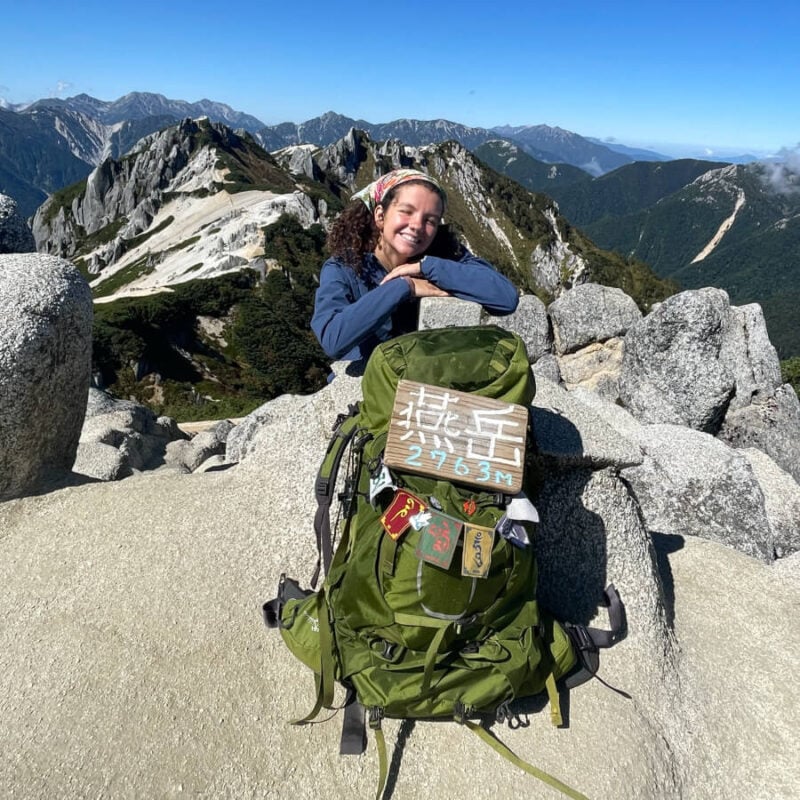
We’ve tested countless backpacks over the years, but there’s one that has always been the best and remains the best buy for adventurers: the broke backpacker-approved Osprey Aether and Ariel series.
Want more deetz on why these packs are so damn perfect? Then read our comprehensive review for the inside scoop!
View on OspreyTop Things to Do in the Philippines
1. Go Diving
The Philippines is one of the best places in the world to dive under the sea. There are hundreds of sites ranging from reef to wreck diving, the open ocean and night dives too! Plus, Philippines budget won’t be blown; it is one of the cheapest places in the world to dive for the day or learn how to free dive.
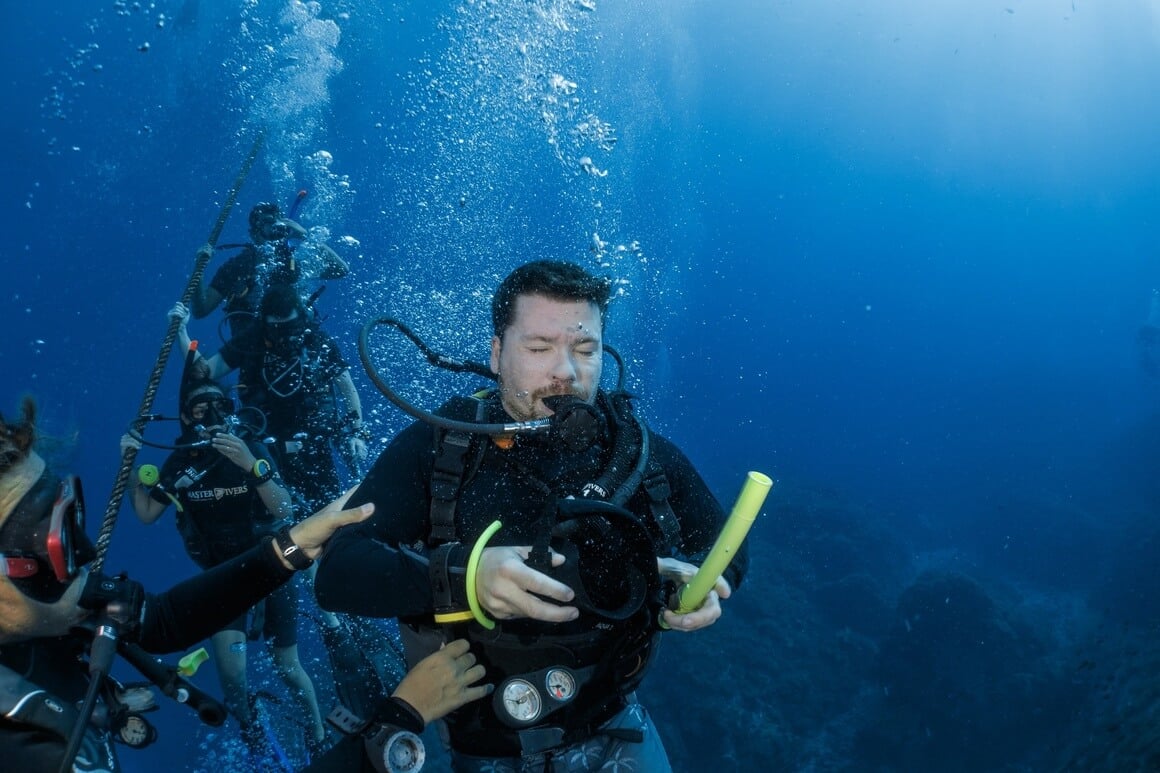
Photo: Will Hatton
Check out our diving section further down to get the low down on the best dive sites. 😉
Pro Tip: If you wanna go diving in Panglao, be sure to hit up Alex — he’s a LEGEND and really knows his stuff… both under AND above water. Just reach out via WhatsApp and let him know I sent you: +44 7812 648968.
2. Go Island Hopping
Considering this is a country made up of thousands of islands, it couldn’t really be a Philippines trip without hopping a couple islands! Most hostels will offer some island hopping trips. You can choose from a chilled trip or take on one of the Philippines infamous booze cruise island hopping trips! One of the best things to do in this amazing country is to simply go with the flow and head off on an island-hopping adventure.
3. Go snorkelling
If you’ve never been snorkelling before, this is the best place to learn how to do it.
You can snorkel with all sorts of amazing animals in Donsol! I highly recommend supporting the industry here versus Cebu (where they hand-feed whale sharks and disrupt the ecosystem and their migration patterns).
There are over 1000 islands in the Philippines so getting away from the tourist-trodden beaten path is actually pretty easy. Even the popular islands have quiet corners and lesser known beaches and resorts.
4. Eat the Local Delicacies
Philippine local delicacies are so good, so cheap, and so weird! The Philippines has the most ‘interesting’ selection of street food I’ve ever seen. It’s the cheapest way to eat, the most delicious and surprising… watch out for hard boiled eggs called Balut.
5. Go Caving in Sagada
There are so many awesome spots to go caving, but I definitely recommend checking out the Crystal Caves in Sagada.
6. Summit a Volcano
The Philippines geographical location within the Ring of Fire means there are plenty of volcanoes to climb or admire from afar. With 25 active volcanoes to summit, yo
7. Swim among the Picture Perfect Lagoons of Palawan
While this area is touristy, there’s a reason why. The clear blue and green lagoons will have you wondering how places likes this exist on Earth.
8. Get off the Beaten Path on the Batanes Islands
If you’re trying to escape the crowds and immerse in local culture, head to the Batanes Islands, where women wear haystack-like-head gear, and people live in traditional stone-and-cogon-grass houses. You can participate in a local homestay. Make sure to climb and hike in the nearby hills and volcanoes!
9. Explore the Chocolate Hills of Bohol
This island is famous for green rivers, jungle, and yes chocolatey hills! It’s one of my absolute favourite things to do in Bohol and it just never gets old.
Whilst you’re in the area you should also check out some of my absolute favourite digs in the Philippines here, I stayed in a wonderful Airbnb in Bohol with a local family who told me all about the history of the region.
10. Surf some Waves!
There are plenty of islands to catch some waves! You can head to the Lozon region and stay on Bicol (near Donsol) for some nice waves. Quezon is a good place to learn how to surf. Check out this surf guide for the Philippines to find the gnarliest curls!
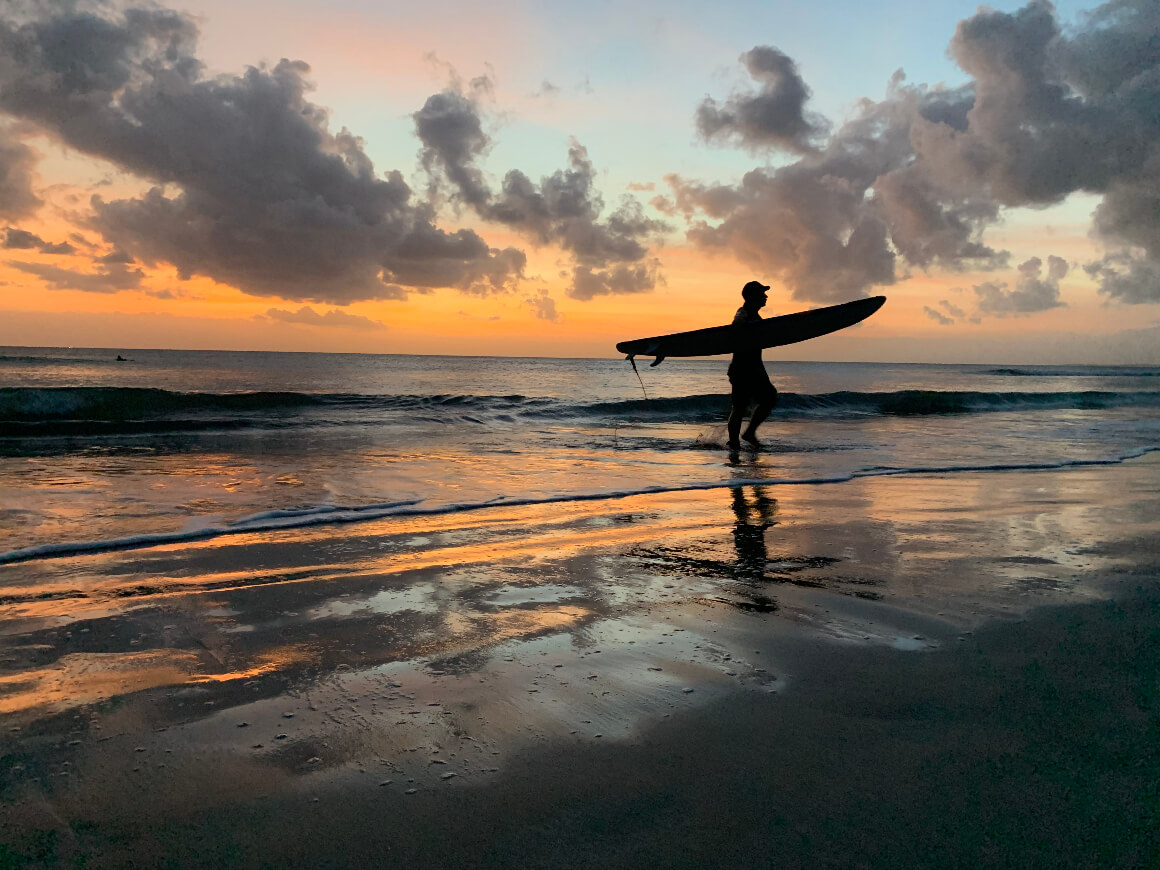
Photo: @joemiddlehurst
Your choices are varied. Climb Mt. Mayon, an active and picture-perfect volcano.
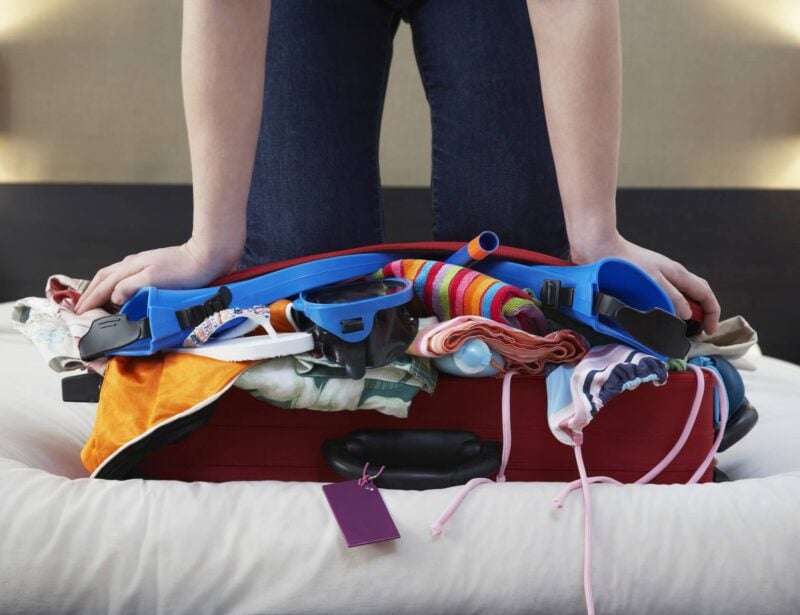
Wanna know how to pack like a pro? Well for a start you need the right gear….
These are packing cubes for the globetrotters and compression sacks for the real adventurers – these babies are a traveller’s best kept secret. They organise yo’ packing and minimise volume too so you can pack MORE.
Or, y’know… you can stick to just chucking it all in your backpack…
Get Yours Here Read Our ReviewIn terms of finding accommodation in The Philippines, you have a lot of options.
The cheap hostels in the Philippines (or ‘guesthouses’ as they’re called locally) are definitely the way to go for those on a backpacking budget. There are plenty popping up all over the islands, so you’ll be spoilt for choice. You can get a pretty decent dorm set up for around $7 per night!
Backpacking the Philippines can be a little luxurious even in the lower range hotels! These beautiful hotels may have basic private rooms, but for $30 a night you can get a private beachfront room. A pretty epic escape from hostel life!
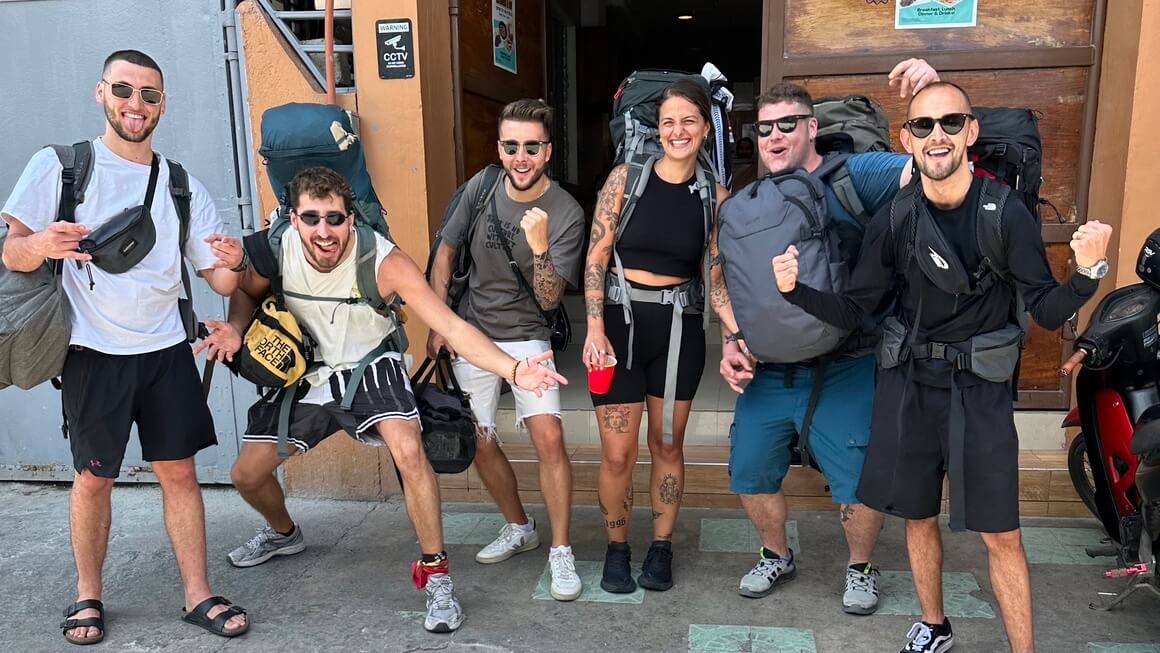
Photo: @joemiddlehurst
If you’re a backpacker lucky enough to have money burning a hole in your pocket, then you’re in for a treat! The Philippines have some insanely fancy pants resort hotels all over the mainland and islands. Starting from around $100 a night you can get some incredible rooms!
If you are backpacking the Philippines in peak season use Airbnb as an alternative. Often just as cheap, and the added bonus is you may get a whole apartment! If not, you’ll make some awesome local friends!
Filipino locals are well known for their hospitality and warmth towards travellers. So it’s not surprising Couchsurfing is popular and well used, that is, if you aren’t invited to stay with the locals anyway. Couchsurfing the Philippines not only saved me some pennies, but I got to experience The Philippines like a local with some wicked new friends. I highly recommend being hosted through Couchsurfing to anyone backpacking the Philippines!
The Best Places to Stay in the Philippines
| Destination | Why Visit? | Best Hostel | Best Private Stay |
|---|---|---|---|
| Manila | Manila is the best way in and out of the Philippines. Seeing as you’re gonna be here anyway, why not explore? | Z Hostel | Tess and Tesha Condotel |
| Boracay Island | Banging beaches, boujee hotels, clear blue water, epic watersports. The LOT. Boracay is just where it’s at. | Frendz Hostel | Boracay Amor Apartment |
| El Nido | If you’re into blue lagoons, coral reefs and nature, El Nido’s the place for you. Gorgeous limestone cliffs are EVERYWHERE here too. | Outpost Beach Hostel | Karuna El Nido Villas |
| Cebu | Dive into the clear blue water, magical waterfalls or even some modern and tradtional culture. | Nacho Hostel Cebu | Sun and Sea Homestay |
| Siargao | To surf, bruh. If you’re a surfer, get yo’ ass to Siargao, seriously. The waves are the main event here. | Mad Monkey Siargao | The Broken Board |
| Puerto Princesa | To see the AMAZING and world famous underground river and eat some damn nice Filipino food, if nothing else. | Guni Guni Hostel | Andrew and Sophias Guesthouse |
The Philippines Backpacking Costs
The Philippines is a broke backpackers paradise. You can backpack the Philippines for as little as $20 a day. Seriously it’s cheap! Obviously, if you splurge for fancy beachfront resorts and classy island hopping tours your Philippines budget may stretch a little. Stick to hostels, street food and the local beer and you will be laughing…
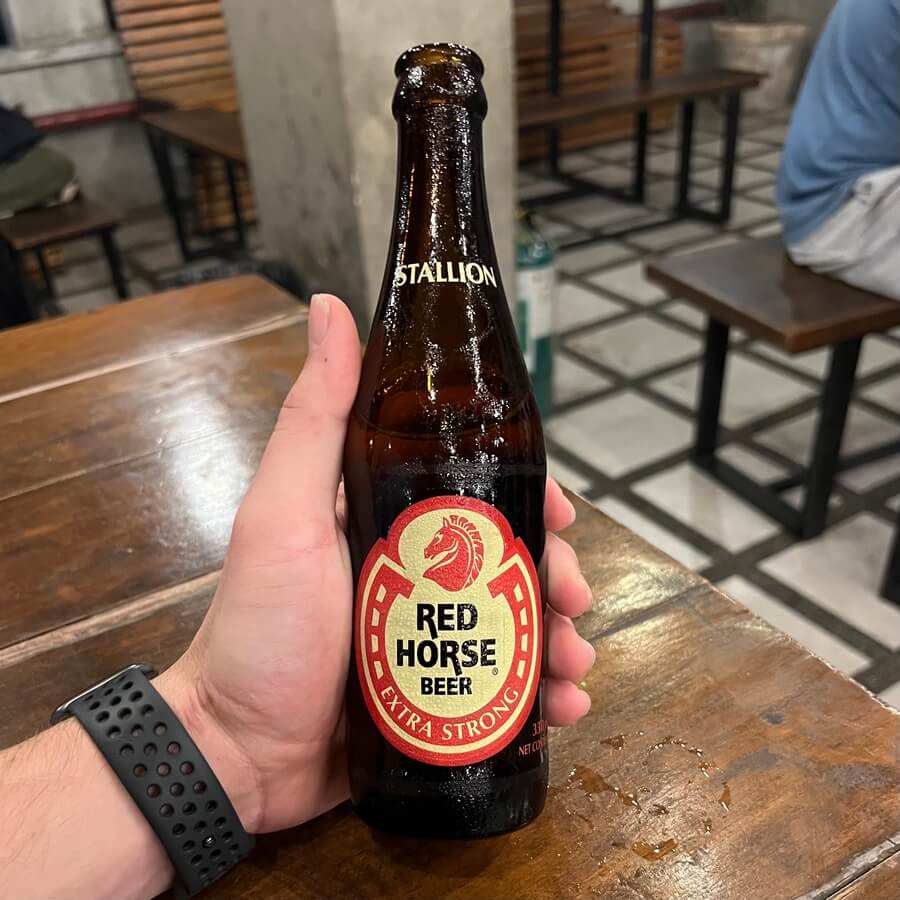
Photo: @joemiddlehurst
That said, if you’re constantly island hopping your budget is going to have to stretch. Places like El Nido and Coron are going to be more expensive. Travelling on shoulder season will save you money too!
A Daily Budget in the Philippines
| Expense | Broke Backpacker | Frugal Traveller | Creature of Comfort |
|---|---|---|---|
| Accommodation | $4-$7 | $8-$15 | $25+ |
| Food | $3-$8 | $9-$16 | $20+ |
| Transport | $2-$8 | $9-$15 | $20+ |
| Nightlife Delights | $1-$5 | $6-$11 | $15+ |
| Activities | $0-$10 | $11-$20 | $30+ |
| Total per day: | $10-$38 | $43-$77 | $110+ |
Money in the Philippines
Asia is great for making us broke backpackers feel loaded! The Philippines certainly doesn’t disappoint. Find out how much your money is worth today by using the up-to-date converter below. Pretty awesome huh? Especially since the local beer is only forty pesos!
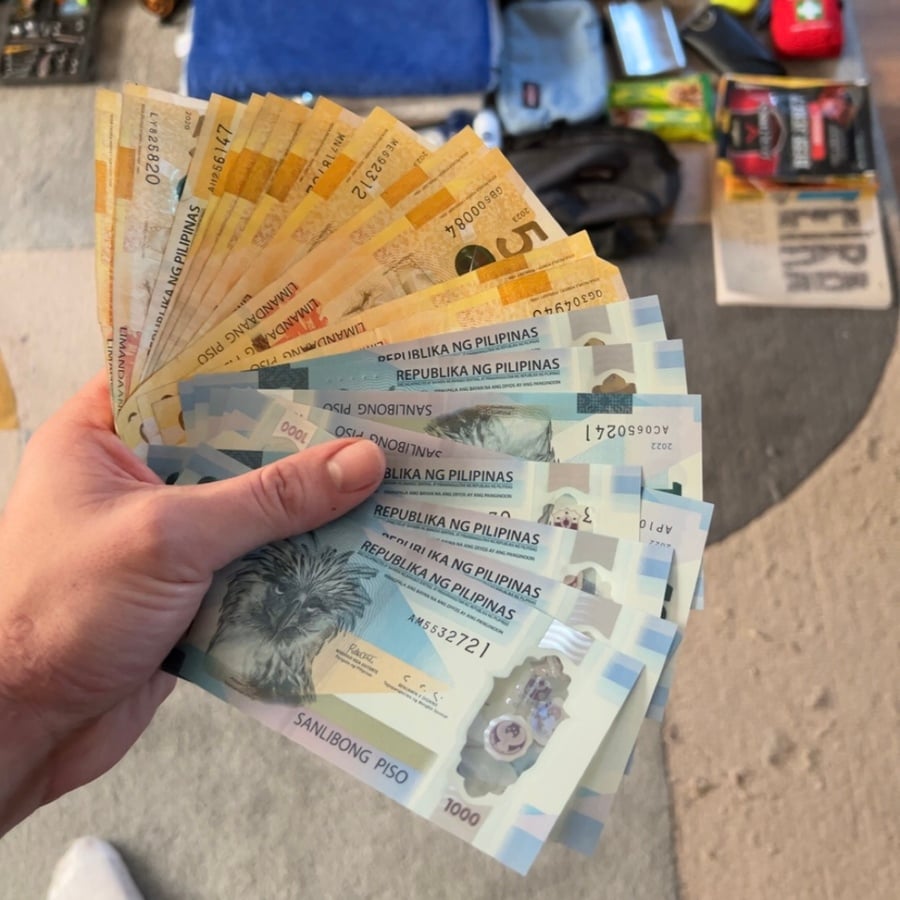
Photo: @joemiddlehurst
You can exchange money in your home country before you begin backpacking the Philippines. However, there is a limit of around 10,000 pesos (around $200) in cash you can bring into the country at one time. I’d recommend exchanging your money once in The Philippines. You’ll get a better exchange rate and you won’t have to worry about restrictions.
ATMs in The Philippines are found in most places, but it isn’t uncommon for ATMs to run out of money, especially on weekends and holidays. You will be charged for using most ATMs (around 200 pesos per transaction), so try to be smart about the amount you withdraw.
Top Tips – the Philippines on a Budget
- Haggle: Want to save money whilst backpacking the Philippines, well get your haggle game on or expect to be ripped off. Haggling is fun and totally normal in the Philippines, so try it! Every penny helps!
- Eat the Street Delicacies: Not only is it delicious, weird and wonderful but it’s damn cheap. Avoid the overpriced tourist restaurants and go where the locals go. If you’re heading off trekking or on a real tight budget, it might be worth packing a good quality backpacking stove.
- Sleep on the Couch: Couchsurfing is taking off in The Philippines and for good reason. It’s freaking awesome! You’ll meet a good bunch of locals who, more often than not, are happy to play tour guide and show you some secret spots! It’s also well worth packing a tent – check out this post for a breakdown of the best tents to take backpacking.
- Ride the Jeepneys: One of the cheapest ways to get around the Philippines, especially in the cities. It is also the most fun if you’re on top. Avoid the tourist buses, save your cash and climb aboard!
- Camp: Take advantage of the warm weather, give camping a go, – hang your backpacking hammock for the night cost-free!
- Pack a travel water bottle: Save money – and the planet – every day!
Why You Should Travel to The Philippines with a Water Bottle?
Plastic washes up on even the most pristine beaches… So do your part and keep the Big Blue beautiful.
You aren’t going to save the world overnight, but you might as well be part of the solution and not the problem. When you travel to some of the world’s most remote places, you come to realise the full extent of the plastic problem. And I hope you become more inspired to continue being a responsible traveller.
Plus, now you won’t be buying overpriced bottles of water from the supermarkets either! Travel with a filtered water bottle instead and never waste a cent nor a turtle’s life again.
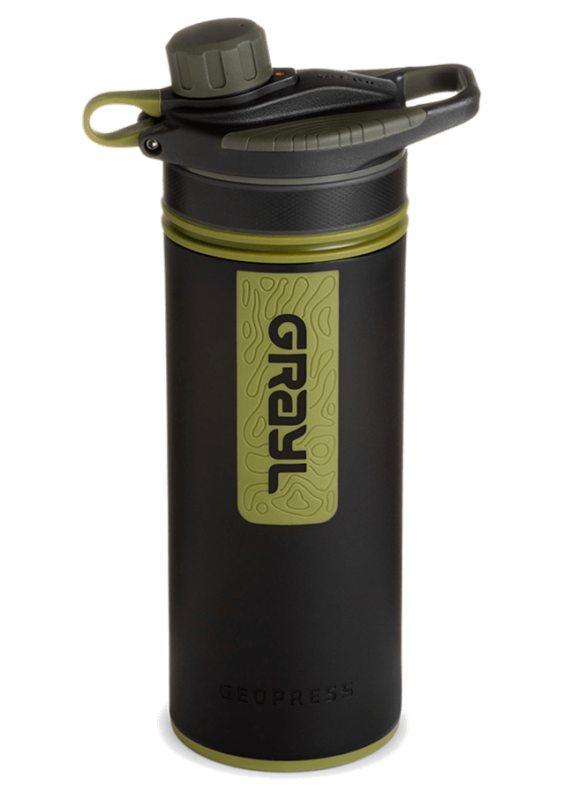
Drink water from ANYWHERE. The Grayl Geopress is the worlds leading filtered water bottle protecting you from all manner of waterborne nasties.
Single-use plastic bottles are a MASSIVE threat to marine life. Be a part of the solution and travel with a filter water bottle. Save money and the environment!
We’ve tested the Geopress rigorously from the icy heights of Pakistan to the tropical jungles of Bali, and can confirm: it’s the best water bottle you’ll ever buy!
View on REI Read the ReviewAnd Speaking of Plastic… Get an eSIM For Philippines
You know those tiny pieces of plastic you used to use to connect yourself to the internet abroad? Sim Cards I think they were called? Well yeah, we’re ditching those as well.
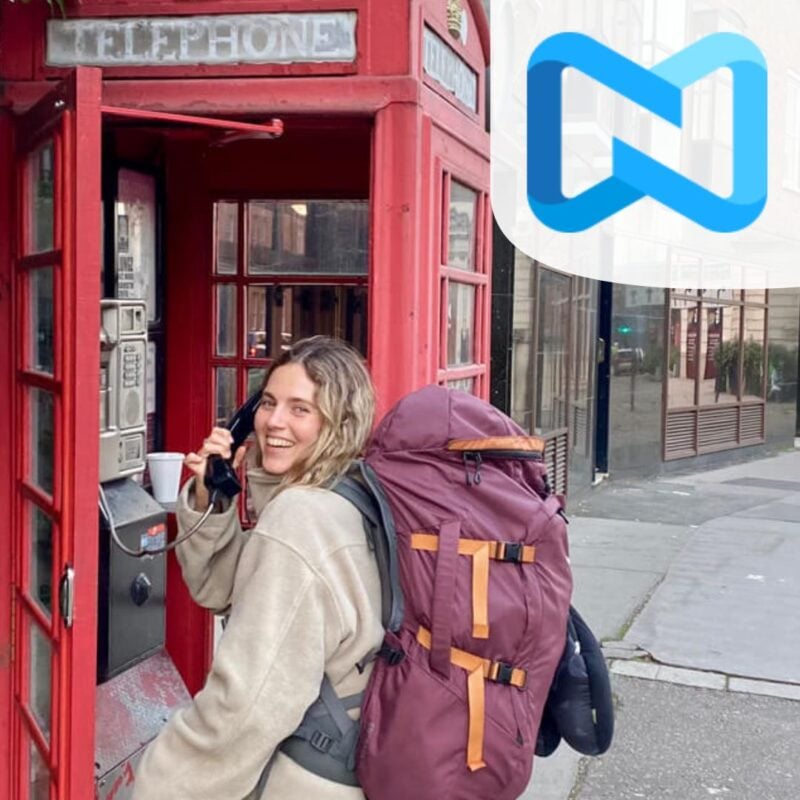
Call your mum, call your job to say you’re quitting or your now ex-boyfriend to say you’re marrying some Sri Lankan dude.
That’s up to you! But get an eSIM — it’s the best way to stay connected when travelling. And Nomad is the best way to find your ideal package 🙂
Get an eSIM with NomadThe Best Time to Travel to the Philippines
The Philippines, like most Asian countries, has popular seasons and of course, the wet season. Thankfully Backpacking the Philippines is great all year round – even in the rain! Most travellers will flock to the Philippines around January and February when the weather is more reliable and cooler, perfect for travelling around!
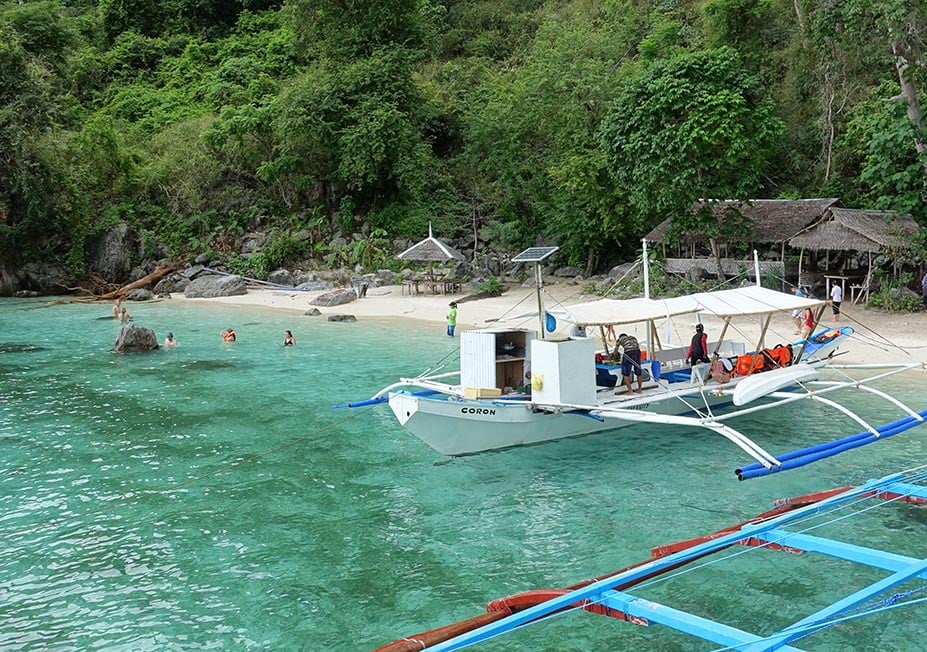
Image: Nic Hilditch-Short
Want more specifics? Let me break down the rest of the year for you amigos planning to go backpacking in The Philippines…
- Dry Season (November – April): This is when the weather is at its warmest and the rains are less likely to hit. Expect comfortable warm temperatures of around 30 degrees reaching the mid thirties on the Islands. The hottest months and most humid are March to May, temperatures will reach up to 36 degrees.
- Wet Season (May – October): ‘Wet Season’ normally put people off; however, this is a great time to backpack The Philippines. The rains aren’t constant, normally an hour or so of downpours before the sun drys everything up again. Expect temperatures of around 25 degrees.
- Typhoon Season (June – August): Not the greatest time to backpack the Philippines. Rains are much heavier at this time and typhoons are common. Many flights and ferries will be cancelled or face delays. Avoid some of the more rural islands at this time of year.
Festivals in the Philippines
- Ati-Atihan Festival: 3rd weekend of January in Kalibo, Aklan, this is one of the oldest religious celebrations in the country. Ati-Atihan is characterized by a parade filled with face-paint, indigenous costumes and dance
- MassKara Festival: Basically Masskara Festival is a giant masquerade party with Latin-inspired drumbeats, and intricate costumes, as well as sports events, concerts and a beauty pageant. Of course, participating in this event is also an opportunity for you to sample the most luscious delicacies that the city has to offer.
- Moriones Festival: Marinduque’s week-long Holy Week celebration combines Catholic pageantry with folk mysticism. During the festival, the centurion’s story will be reenacted in a theatrical play that’s staged by the locals.
- Giant Lantern Festival: San Fernando’s Giant Lantern Festival is a Christmas contest with giant bright lanterns. San Fernando has been fondly nicknamed as the “Christmas Capital of the Philippines.”
What to Pack for the Philippines
The Philippines is less conservative than its neighbouring countries of Malaysia, Indonesia and Taiwan when it comes to clothing. As tourism grows and island hopping and beach parties continue, the dress code is turning more towards the western style we are used to. However, venturing into the less tourist and rural areas it is best to dress more conservatively.
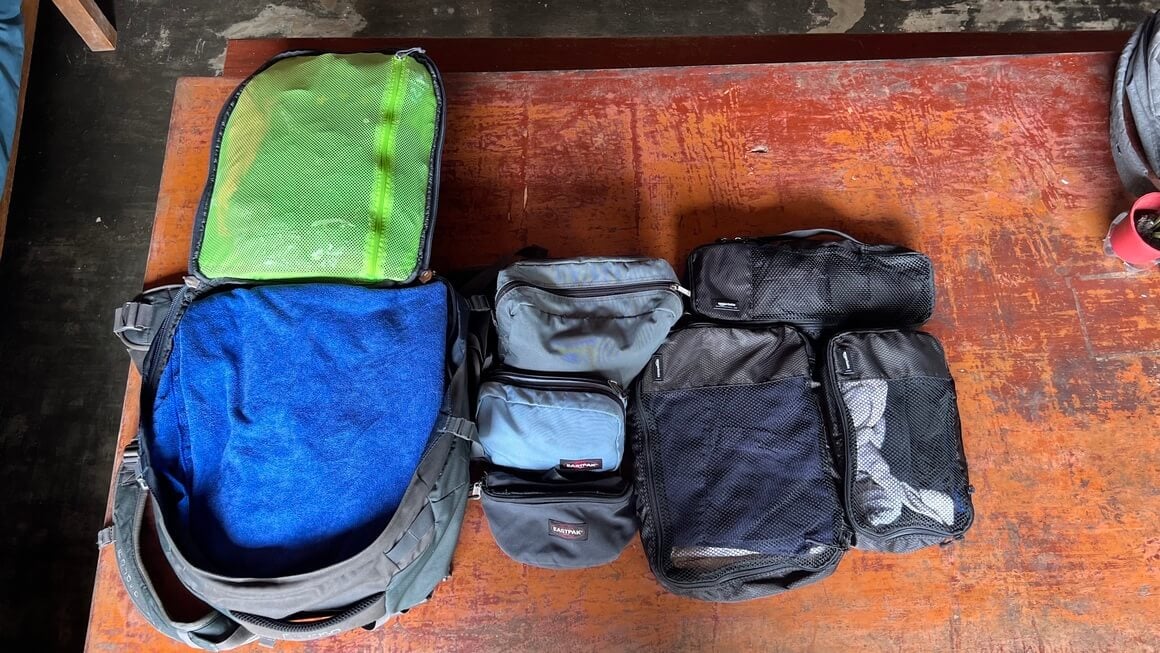
Photo: @joemiddlehurst
Avoid wearing all black; it’s considered a mourning colour, but black in the heat of the sun wouldn’t be my first choice anyway… If you are going to visit churches and temples make sure your shoulders, cleavage and knees are covered, otherwise, your packing for the Philippines should definitely be light and breathable.
When backpacking The Philippines, gals, I recommend carrying a Pashmina with you. If you need to cover up to visit that random temple or just need a break from the sun, they are highly recommended by the women-folk.
Ear Plugs
Snoring dorm-mates can ruin your nights rest and seriously damage the hostel experience. This is why I always travel with a pack of decent ear plugs.
Hanging Laundry Bag
Trust us, this is an absolute game changer. Super compact, a hanging mesh laundry bag stops your dirty clothes from stinking, you don’t know how much you need one of these… so just get it, thank us later.
Sea To Summit Micro Towel
Hostel towels are scummy and take forever to dry. Microfibre towels dry quickly, are compact, lightweight, and can be used as a blanket or yoga mat if need be.
Monopoly Deal
Forget about Poker! Monopoly Deal is the single best travel card game that we have ever played. Works with 2-5 players and guarantees happy days.
Grayl Geopress Water Bottle
Always travel with a water bottle! They save you money and reduce your plastic footprint on our planet. The Grayl Geopress acts as a purifier AND temperature regulator. Boom!
Staying Safe in the Philippines
Generally travelling in the Philippines is very safe in the touristy areas, but there are some places you want to avoid.
The whole of the far south is a no-go zone:
- The area of Mindanao (Apart from the north, there are some great Airbnbs in Cagayan de Oro and decent Airbnbs in Davao City too for example)
- The Sulu Archipelago
- And the Zamboanga Peninsula are all considered extremely dangerous due to terrorist activity.
Also, with so many adventures to be had in the Philippines, don’t forget to be safe while diving, surfing, trekking, and climbing!
For more safety tips when travelling the Philippines:
- Check out Backpacker Safety 101 for tips and tricks to stay safe whilst backpacking.
- Pick yourself up a backpacker security belt to keep your cash safe on the road.
- Check out this post for plenty of ideas on ingenious ways to hide your money when travelling.
- I also strongly recommend travelling with a headlamp whilst in the Philippines (or anywhere really – every backpacker should have a good headtorch!) – check out my post for a breakdown of the best value headlamps to take backpacking.
Sex, Drugs, and Rock ‘n’ Roll in the Philippines
Partying in the Philippines is boats, booze, bikinis, crystal clear water, and some wicked beats. The best parties are normally found outside of the main cities, off land and basically whilst island hopping. It’s an essential Philippines bucket list activity and honestly, there’s a party to suit all of us. If you want crazy dance beats, sexy dancers and unlimited alcohol or just a chilled vibe on the beach with a smoke, you got it.
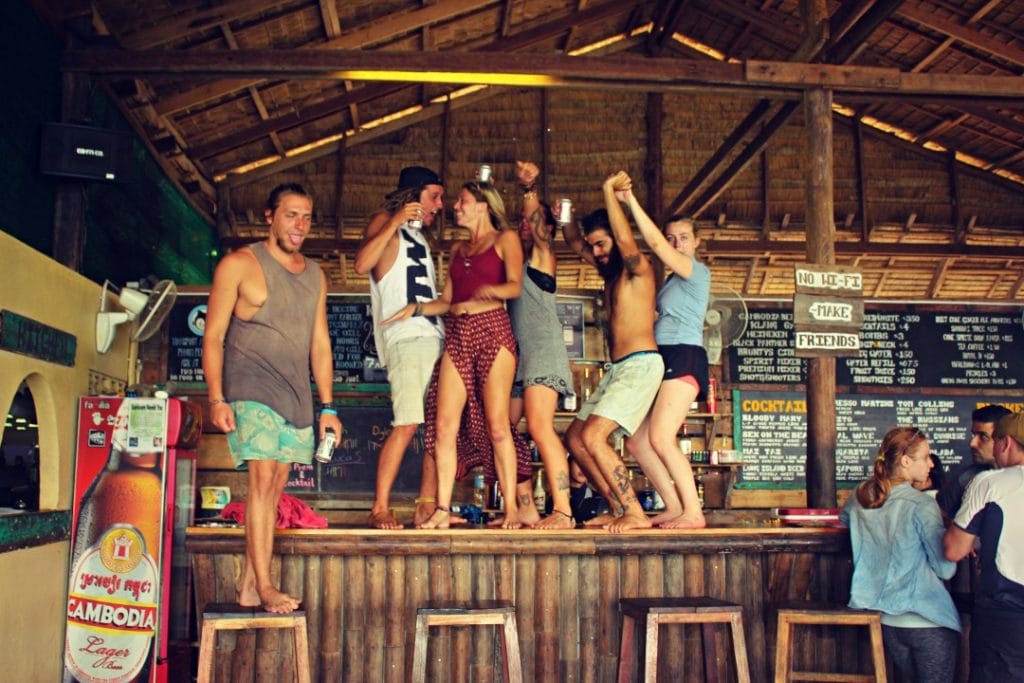
Image: Monique MacPhail
On that note; the situation with Drugs in the Philippines has changed big time in the last twelve months. Jail sentences, steep fines, and even death penalties, are not uncommon punishments, and foreigners are not exempt.
Police and other authorities have released strong statements regarding the trafficking and use of drugs in the Philippines. Recently, the police have waged a war on drugs resulting in the deaths of hundreds. Be careful. Just testing positive to a drug reading could land you in jail for 6 months. You’re better off just staying away from drugs altogether in the Philippines. If you are going to dabble in illicit substances, at least read Blazed Backpackers 101 for tips on how to stay safe.
Sex tourism in the Philippines is big and obvious. Prostitution is illegal but it’s definitely around, especially at Go-Go bars. I went to a wrestling match AND these young girls were everywhere. Some of them looked well under the age of 18 and were hanging off 50-year-old men.
Tinder very much works in The Philippines and the locals are… erm, very friendly. Picking up chicks in The Philippines is relatively easy and Filipinas do love to have a good time. Always show respect to local girls when traveling, it’s all to easy to break hearts when you’re dishonest with your intentions.
Alcohol is widely drank and readily available. The Philippines has horrifically strong Red Horse beer and some tasty rums on offer.
Travel Insurance for the Philippines
ALWAYS sort out your backpacker insurance before your trip. There’s plenty to choose from in that department, but a good place to start is Safety Wing.
They offer month-to-month payments, no lock-in contracts, and require absolutely no itineraries: that’s the exact kind of insurance long-term travellers and digital nomads need.
SafetyWing is cheap, easy, and admin-free: just sign up lickety-split so you can get back to it!
How To Get Into The Philippines
Flying into the Philippines was incredible. Thousands of islands surrounded by a beautiful blue ocean looked like the paradise that was promised after all the hype! Most backpackers travelling in The Philippines start off in Manila, the main flight hub. It’s likely your flight will land here or at least connect through to one of the many islands.
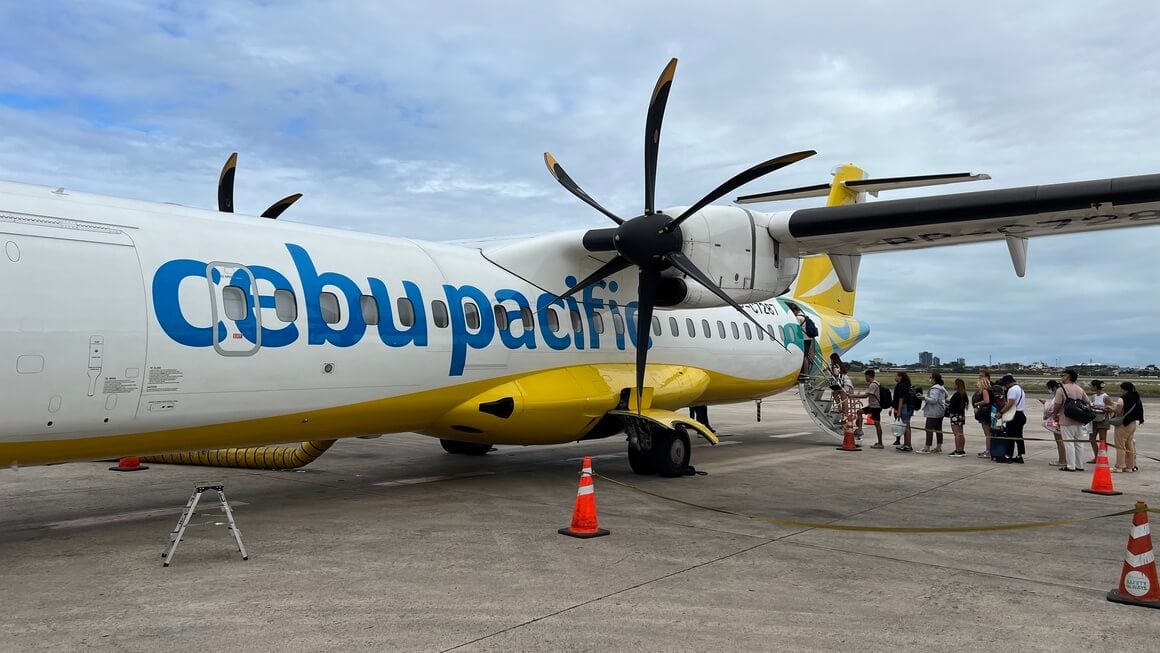
Photo: @joemiddlehurst
Flights to The Philippines are becoming more frequent. The cheapest airline to fly with is Philippine Airlines; however, they don’t come with the greatest reputation. I guess you get what you pay for, right?
I often find great international deals to The Philippines with China Southern (via Guangzhou) and Emirates (via Dubai). If you’re flying within Asia, rejoice broke backpackers, it’s so freaking cheap! You can get flights with the likes of Air Asia and Philippines Airlines for as little as fifty dollars!
Entry Requirements for the Philippines
Upon arrival, the majority of nationalities will get a visa allowing one month of travel in The Philippines on arrival. If you know you are going to stay longer than a month, definitely organise your visa before you arrive.
IMPORTANT NOTE: You usually cannot enter the Philippines, or even board a flight to The Philippines, unless you have an outbound flight already booked and can show proof. If you don’t know how long you plan to stay, this can be a major pain in the ass… A good way round this is to use this site to get hold of the documentation you need without actually having to pay for a full flight.
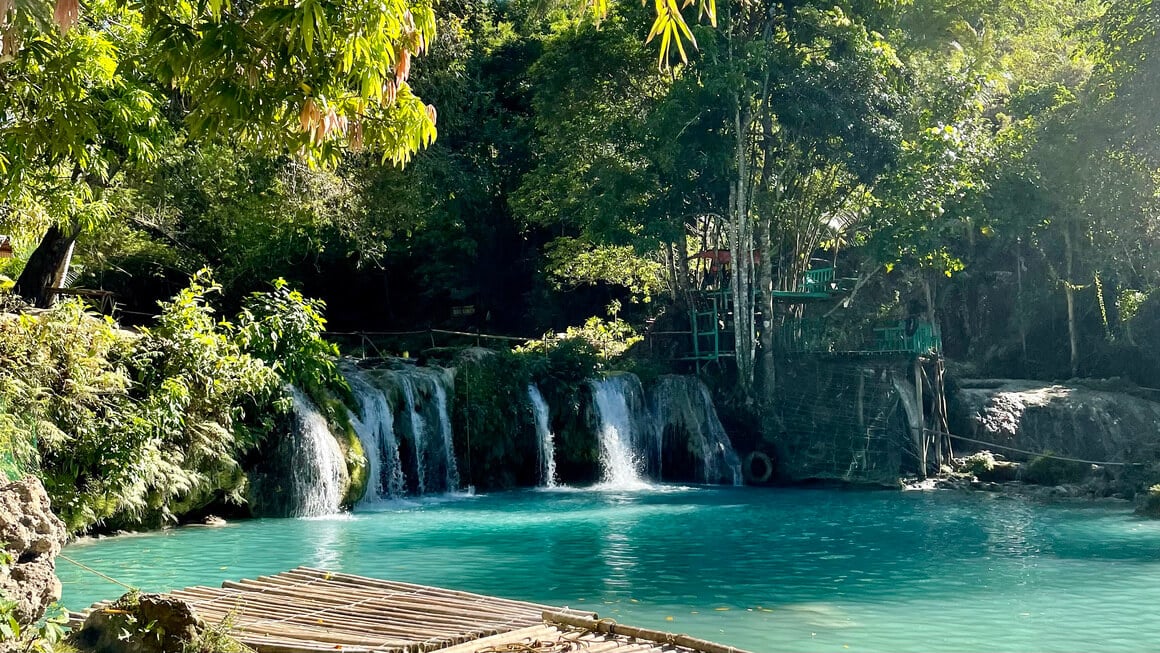
Photo: @danielle_wyatt
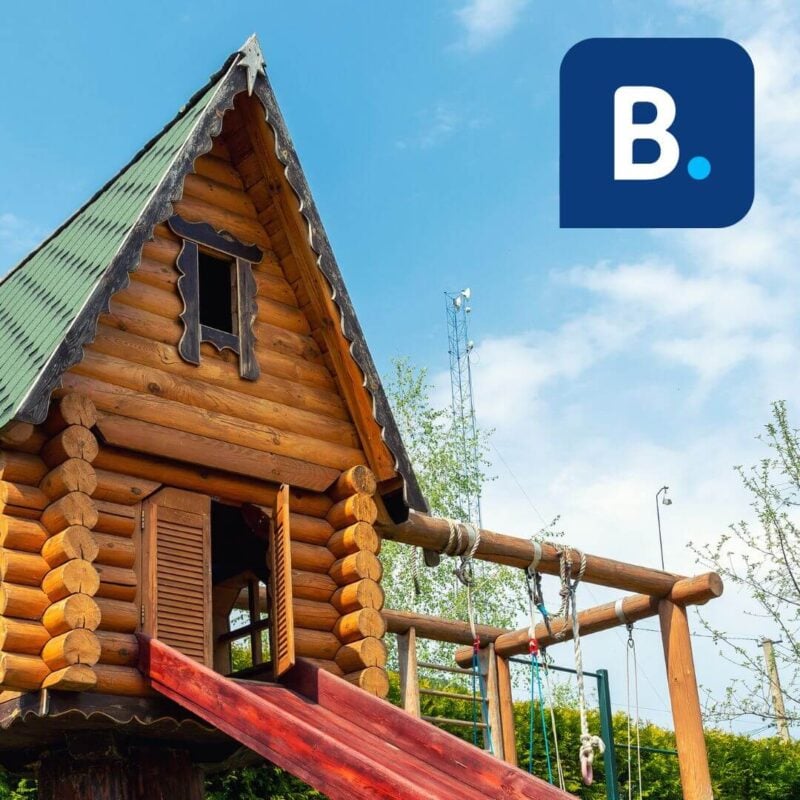
Get 15% OFF when you book through our link — and support the site you love so dearly 😉
Booking.com is quickly becoming our go-to for accommodation. From cheap hostels to stylish homestays and nice hotels, they’ve got it all!
View on Booking.comHow To Get Around the Philippines
Backpacking the Philippines is easy, even for those with the worst sense of direction! A spider web of bus links, friendly and helpful locals, and all modes of travel offered at super cheap prices mean that getting around the Philippines couldn’t be easier! As long as you don’t expect air con, you are happy with loud music or movies playing, and a lack of glass windows, your budget Philippines adventure will be a breeze.
Traveling By Public Transport in the Philippines
Most backpackers opt to travel The Philippines through its intensive network of long bus distance links. Seriously, the country has a spider web of bus routes, making it so easy to get from A to B. Prices vary around P435 – P500 and tend to run every half an hour or so.
Ferries, or Bangkas, are still one of the cheapest ways to get off the mainland and onto some of the incredible islands. These little wooden outrigger boats, Bangkas, are often uncomfortable and packed full of people. But they are great for boozy island hopping trips! Bangkas are the cheapest option to sail to the islands. If you want to do it more comfort there are larger ferries.
Prices for the ferries will range from P750 – P1150 (add an extra thousand for private cabins) and tickets can be bought at the pier right up to departure. Just keep an eye on the weather, take it from me; being on one of these tiny boats, packed with people and seasickness is not worth it – and pack suncream!
This is definitely the quickest way to travel around but it isn’t the cheapest. There are a number of domestic, cheap airlines available including the national airline, Philippine Airlines though. If you’re one of the lucky fare hunters, you can pick up seats for one P1! But on average, regular fares will be around P499 – P999 depending on the flight route. The only downside of air travel? You will often have to backtrack to the main hubs of either Cebu or Manila.
The ultimate Philippine icon, these are not rare in the cities of Manila, Cebu City, Davao and Baguio and essentially are repurposed American Jeeps from WWII given a dash of paint. You will definitely end up travelling on one of these while backpacking The Philippines and likely you’ll find yourself involved in jolly conversations with the rest of the passengers about your nationality, destination and marital status…
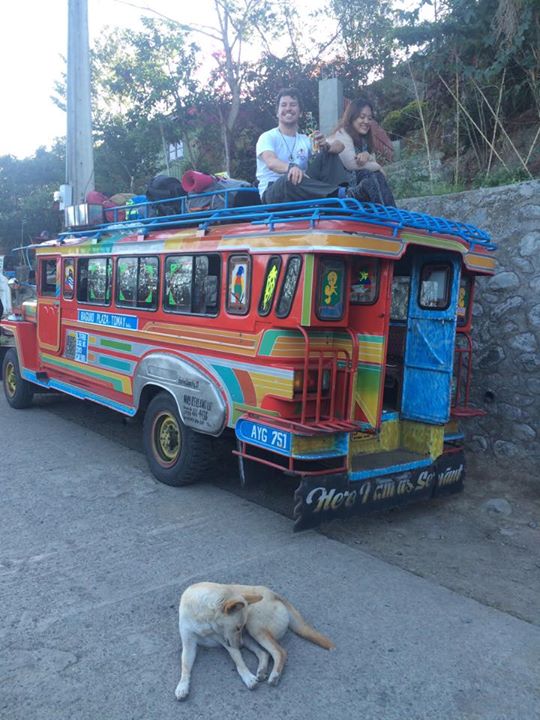
Photo: Will Hatton
There are no fixed schedules, you simply hail Jeepneys down from the side of the road and learn their route from what is scribbled on the window that day. It’s best to only use Jeepneys if you have an idea of where you’re going, or manage to make friends with one of the locals. Not only will this keep you from getting lost, also less likely to get ripped off.
Expect to pay around P7 for short journeys or if going between towns, up to P50. Definitely, try out top-loading (sitting on top of the jeepney) where possible.
You can just hop on a bus without a ticket but if you’d rather book in advance, I’d recommend checking out Bookaway. Rather than just rocking up at the bus stop in the hope they will have space to fit you on, you can book tickets in advance!
Using Bookaway you can book cheap tickets for long and short journeys all over Asia! Seriously, this saves so much precious time and confusion!
It’s not just buses either – Bookaway can get you sorted with ferry tickets too. Check it out!
Hitchhiking in the Philippines
Getting around The Philippines is relatively easy, and with many different modes of transport for all budget levels it seems silly to even consider hitchhiking… Wrong amigo!
Hitchhiking the Philippines is easy if you are hoping to travel a small distance and it’s is a great way to meet cool people on the road. Not only will locals pull over to curiously help you on your way, but Jeepneys will often stop as well. Just make sure to let them know you’re hitchhiking with no money before you hop in, or you could find yourself in an awkward situation.
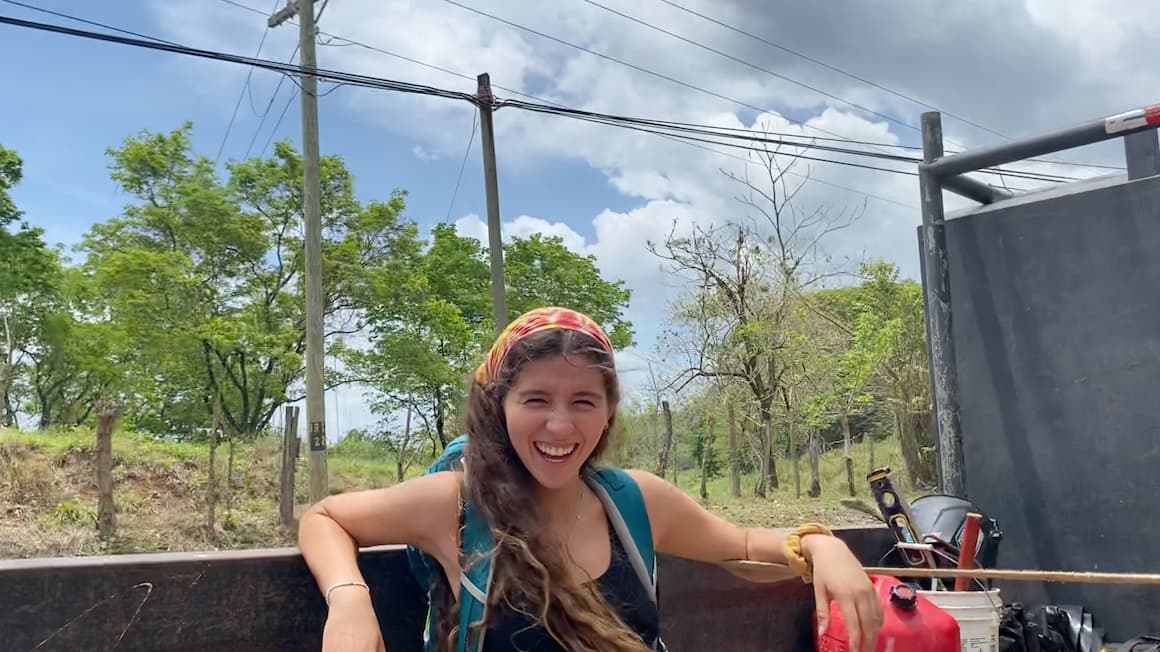
Photo: @amandaadraper
Travelling a longer distance? Hitchhiking becomes a little harder. Most locals with their own vehicles are only travelling short distances and those that are travelling longer distances will often look for a bit of cash to help with fuel. If you are planning to hitchhike the Philippines I recommend hitchhiking short distances. If you’re travelling longer, hop in a Jeepney.
Onwards Travel from The Philippines
Since the Philippines is comprised of islands, the main way to travel onwards is by flight (unless you’re a sailor of course!). There are pretty cheap flights from Manila (and sometimes Cebu) travelling onwards in Southeast Asia to countries like Thailand, Vietnam, and Indonesia!
Working in The Philippines
The Philippines isn’t typically a destination that ex-pats come to looking for work. Salaries are low, the currency weak and economic migration usually heads the opposite direction. That said, the Philippines is a popular destination for Westerners to retire to, is a bit of a digital nomad hub and there are always teaching opportunities for backpackers. The cost of living in the Philippines is pretty low, too!
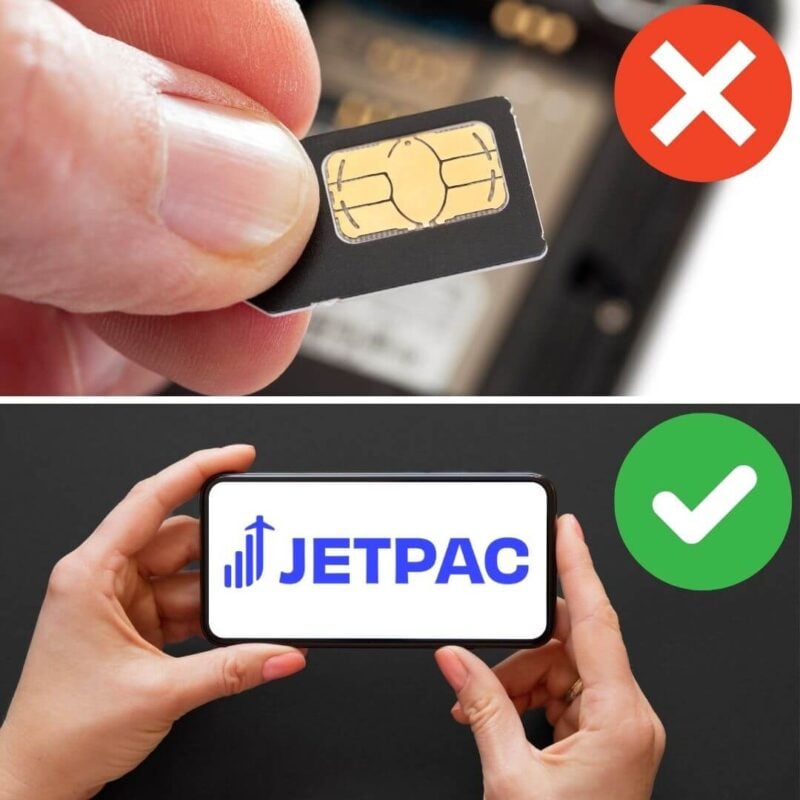
A new country, a new contract, a new piece of plastic – booooring. Instead, buy an eSIM!
Jetpac eSIMs work just like an app: you download it, pick your plan, and BOOM! You’re connected the minute you land. It’s that easy.
Read about how e-Sims work or click below to see one of the top eSIM providers on the market and ditch the plastic.
Grab an eSIM!Work Visas in The Philippines
To work in the Philippines a work visa is required. This must be obtained by an employing company. Despite being popular with digital nomads, there is no digital nomad visa available and most simply enter on long-stay tourist visas.
Teaching English in the Philippines
Speaking English is a highly-valued skill all over the world. For locals, it opens up whole new worlds of employment opportunities and travel.
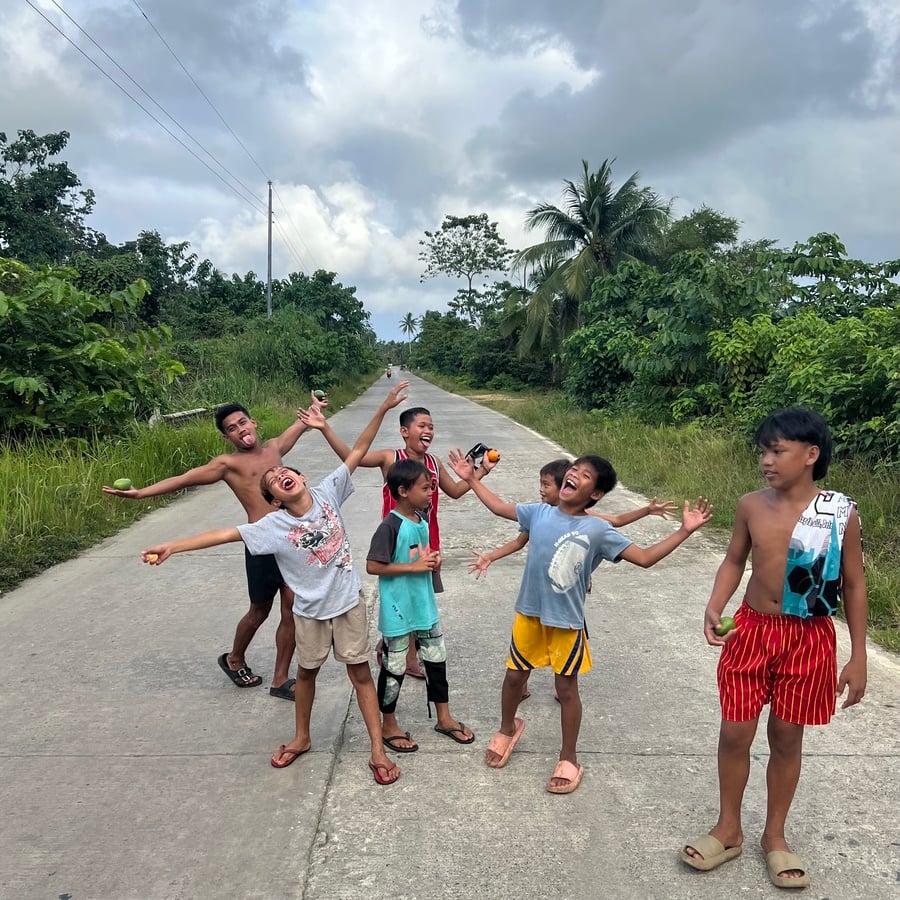
Photo: @joemiddlehurst
Perhaps one of the best options for backpackers wanting to explore the Philippines long-term and experience living in this truly incredible country is to get a Teaching English as a Foreign Language certificate online.
Volunteer in the Philippines
Volunteering overseas is a great way to experience a culture whilst doing some good in the world. There are lots of different volunteer projects in the Philippines which you can join ranging from teaching, to animal care, to agriculture to pretty much anything!
High levels of poverty throughout the Philippines mean there are plenty of opportunities for backpackers to volunteer and help small communities. Social work, like teaching, and cultural exchanges are always available to aid community development. Other opportunities include helping out in hospitality and assisting with eco-projects on farms. Travelers won’t need a special visa to volunteer in the Philippines for less than 90 days, but you’ll have to apply for the appropriate permit to stay long-term.
Our go-to platform for finding volunteering gigs is Worldpackers who connect travellers with host projects. Have a look at the Worldpackers site and see if they have any exciting opportunities in the Philippines before signing up.
Alternatively, Workaway is another excellent common platform used by travellers searching for volunteering opportunities. You can read our review of Workaway for more info on using this terrific platform.
Volunteer programs run through reputable work exchange programs like Worldpackers and platforms like Workaway are usually very well-managed and reputable. However, whenever you are volunteering do stay vigilant, especially when working with animals or children.
What to Eat in the Philippines
The Philippines has an awesome selection of Street food; from the damn delicious to the slightly weird, there is something for everyone. The food in the Philippines is influenced from Spanish, Chinese and Malay recipes so expect a good mix of East meets West.
So what to try when wandering the streets and spoiled for choice? Let me tell you my favourite delicacies I tried while backpacking the Philippines…
- Chicken Adobo: Basically beautifully marinated Chicken or Pork in Soya Sauce and Vinegar. Seriously, delicious and so simple. Perfect on its own or with some noodles.
- Kare Kare: Kare Kare is famous throughout the whole country because it is SO delicious. If you’re missing the curries from Asia grab this dish! Basically, oxtail and ox tripes stew with lots of vegetables, flavoured with ground roasted peanuts or peanut butter, onions and garlic….
- Kinilaw: Sushi lovers, rejoice! I was skeptical trying raw food from the street, but wow! The raw fish salad is served in an acidic juice, usually kalamansi and vinegar, which “cooks” the meat.
- Paksiw Na Lechon: Lechon means ‘suckling pig’ in Spanish and is literally a whole pig roasted over charcoal for many hours for special occasions… This is considered the national dish of the Philippines.
- Tapsilog: Missing your English cooked brekkies? This is the next best thing. Cured beef, fried rice and a fried egg, great to have after a boozy island hopping trip!
- Fresh Lumpia: Ever wondered what a spring roll crossed with a burrito would taste like? Well wonder no more! Filled with meat, lettuce, carrots, peanuts and even some coconut in there. Have it fresh or try the deep fried version – even more awesome.
- Chicharon: Deep fried pork skin or as I call them; The Doritos of The Philippines. Bags of these are opened and shared around when kicking back and relaxing, served with dips you now just need a good smoke or movie…
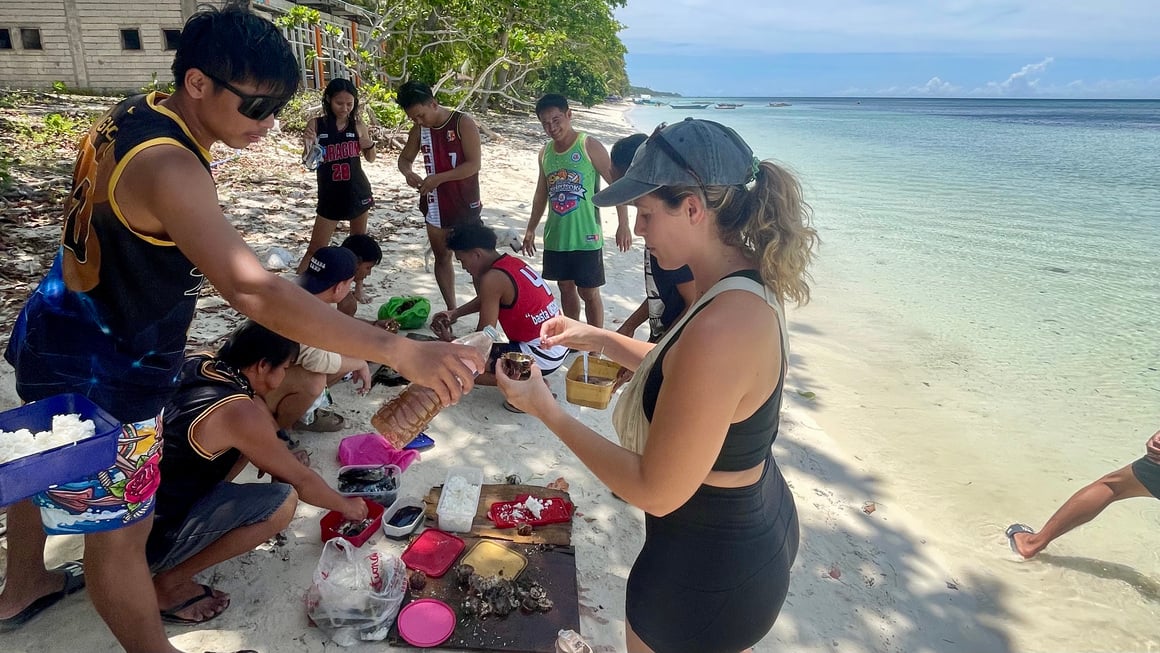
Photo: @danielle_wyatt
For Filipino cooking classes, check out this site for awesome deals.
Culture in The Philippines
The Filipino people are some of the warmest, friendliest, and generous people I’ve met on my travels. They are always keen to find out where you’re from and going, offering to show you the way and helping you haggle the best price; all with a smile on their faces. It’s not a surprise to be invited out for a beer, back for some local delicacies, or even a place to stay! Embrace it: you’ll meet some incredible friends, be taken to some wicked hidden spots and shown how to party local style!
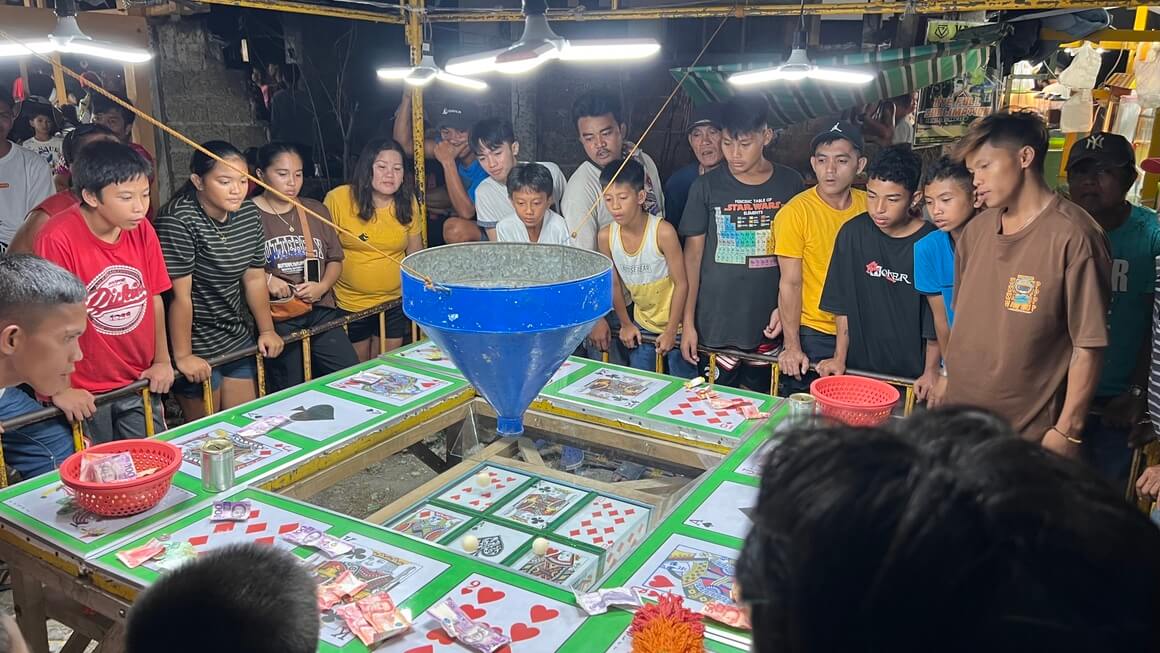
Photo: @joemiddlehurst
Books to Read about The Philippines
- History of the Philippines: From Indios Bravos to Filipinos: For the history nerds, this is an awesome background of The Philippines, the culture and what went into making it the incredible country it is today. Seriously, well worth a read!
- The Latinos of Asia: How Filipino Americans Break the Rules of Race: An interesting book exploring how social status will change people’s perception of your race, the background into Filipino Culture and how Spanish Colonialism has influenced The Philippines. A real in-depth read but seriously worth it.
- Philippine Folk Tales: Want to hear real life stories before getting there and meeting the people behind them? Check this book out! Filled with stories and tales from local indigenous Filipinos and their lives. I love reading people’s tales of a country, it makes me feel connected to the country before I even get there. It’s fantastic.
- Lonely Planet Philippines: For those who love to organise the trip while they go, the lonely planet has everything and anything you need to do this. I am not normally one for guidebooks, I often find them a pain to lug around. But they do come in handy when you need a helping hand.
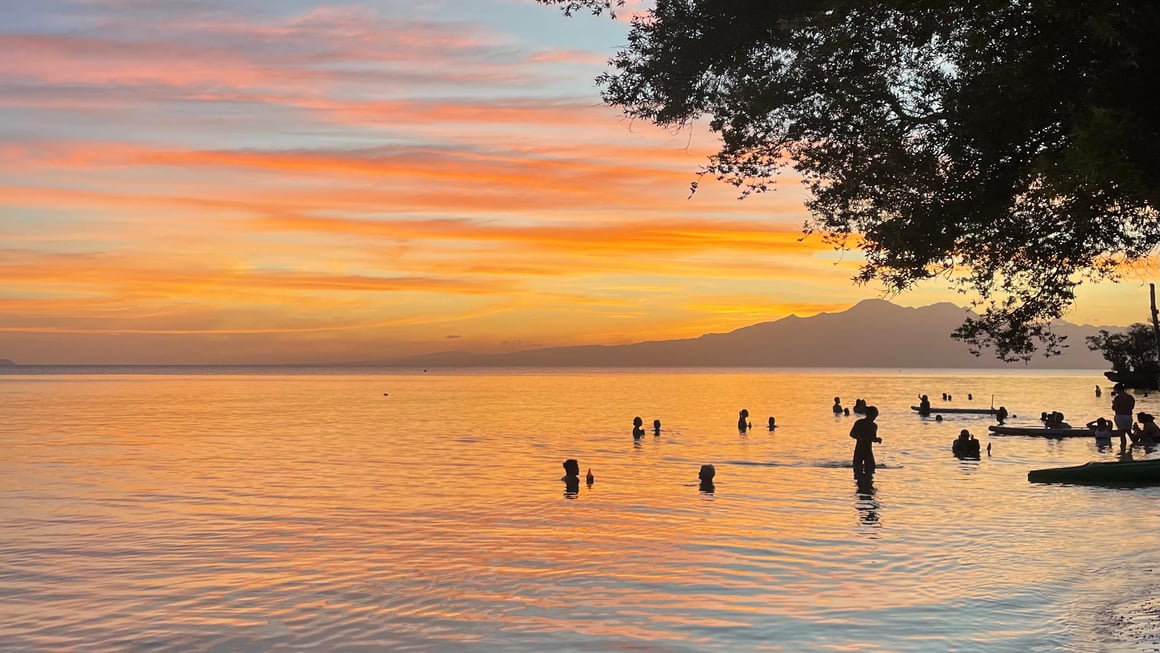
Photo: @danielle_wyatt
A Brief History of the Philippines
The Philippines was originally inhabited by hunter-gatherers. The Spanish explorer, Magellan, claimed the islands for Spain in the 1520s.
Spanish conquistadors created a feudal system in the Philippines, and Spaniards owned vast estates worked by Filipinos. They also converted the Filipinos to Catholicism. You’ll see much of this influence in the Philippines today.
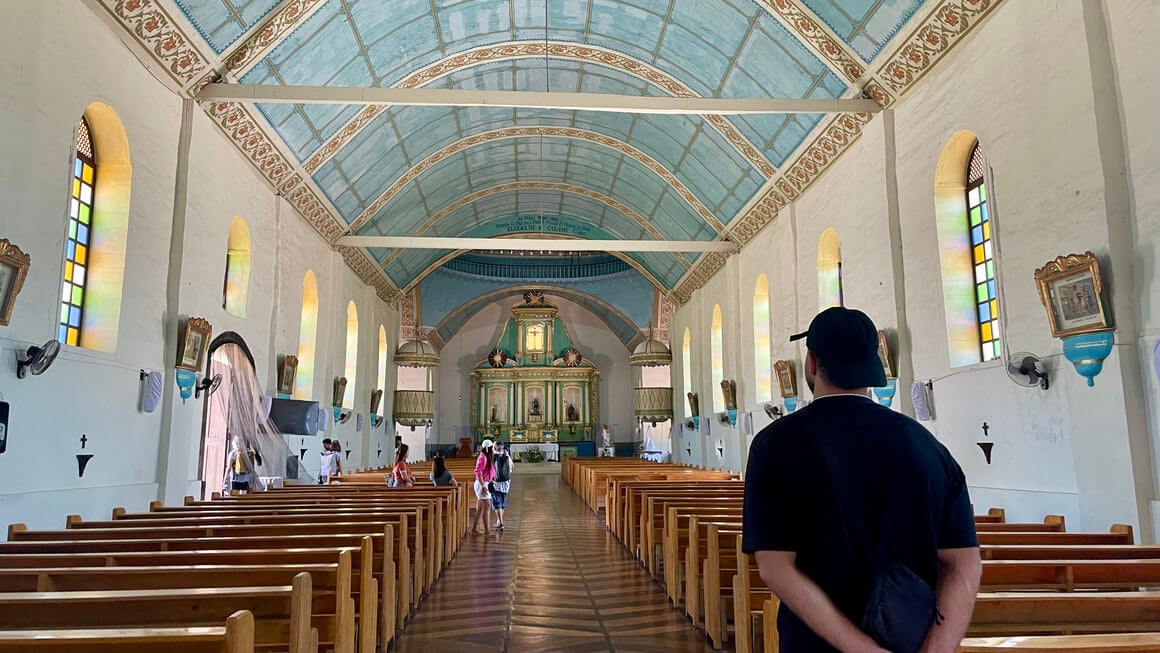
In 1898 came war between the USA and Spain. The USA colonized the Philippines, though after WWII the Philippines became an independent country. Many 20th century Presidents are known for running dictatorships, but poverty and education levels have been improving in the 21st century.
Be aware, however, that the Philippines current President, Duterte, is yet another dictator known for his tough war on drugs, where thousands of people are dying.
Some Unique Experiences in the Philippines
Diving in the Philippines
There are endless options for diving in the Philippines, but many of the best dive sites have already been mentioned in this guide, and are included on all of the Philippines itineraries!
- In the Palawan Region you have Coron Island, which has some of the best wreck dives in the world. Barracuda Lake in Coron Island is a great fresh-water site with alien-like underwater landscapes and legends of a monster-sized barracuda. Near Coron you can reach Apo Island by boat, a well-protected marine sanctuary and one of the best dive sites in the world.
- Tubbataha Reef National Park in the Sulu Sea, Palawan is a Philippines national park with over 600 fish species, 360 coral species, 11 shark species, and 13 dolphin and whale species.
- Puerto Galera in Mindoro – not too far from Palawan – has over 40 dive sites for all levels. Sabang is where the hardcore diving community and Long Beach is the easy-going beach culture.
- Monad Shoal in Malapascua, Cebu is famous for the elegant, oddly-shaped thresher sharks that breach the waters off the island.
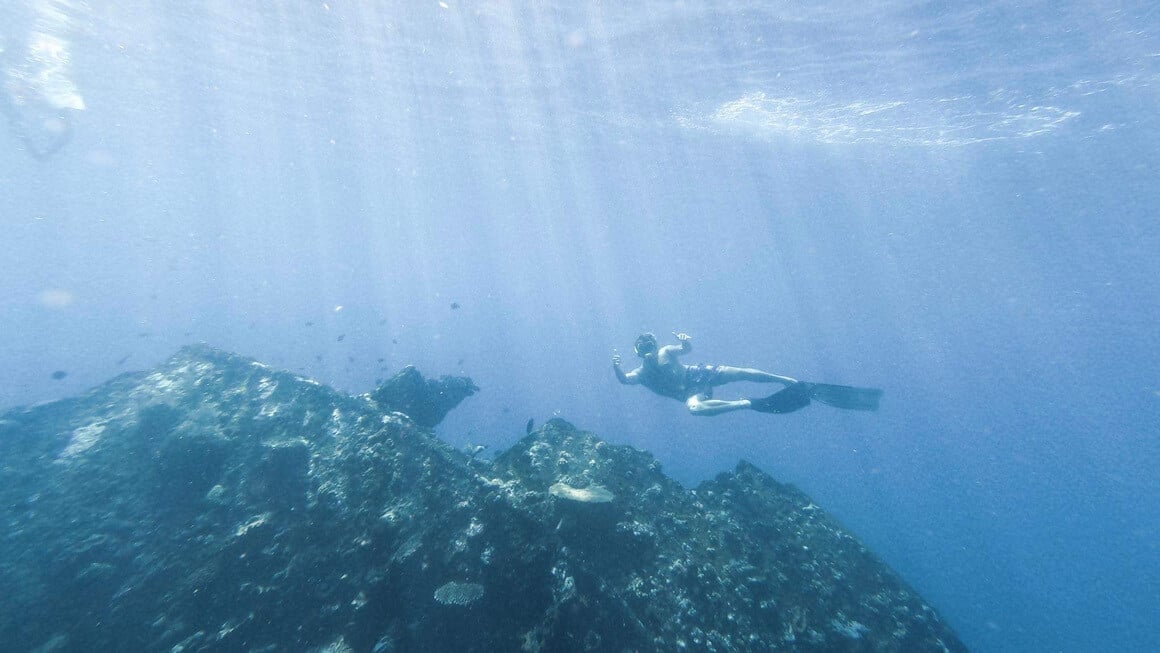
Photo: @danielle_wyatt
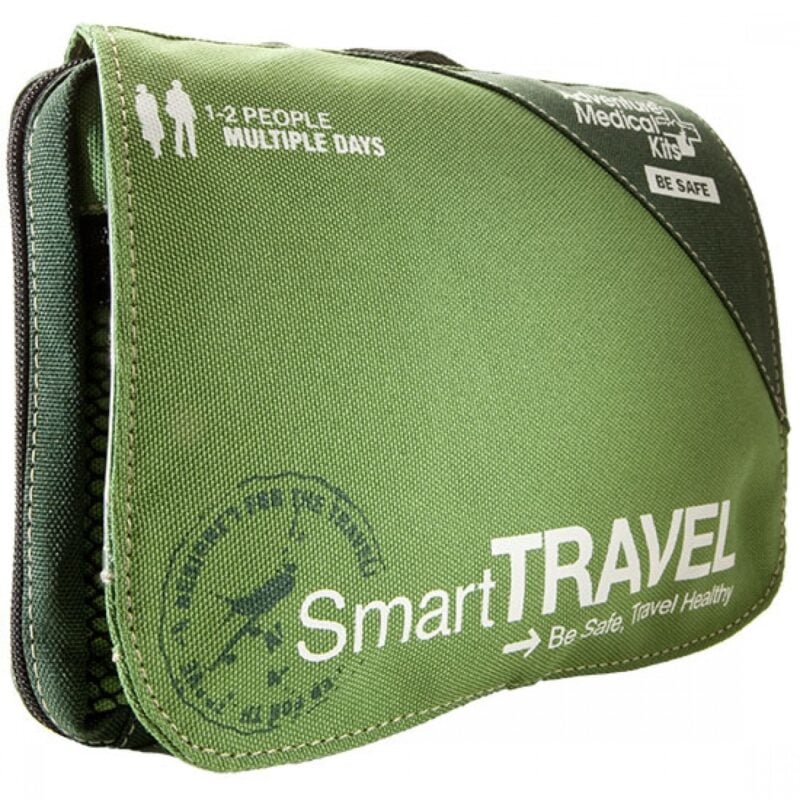
Things go wrong on the road ALL THE TIME. Be prepared for what life throws at you.
Buy an AMK Travel Medical Kit before you head out on your next adventure – don’t be daft!
Buy on REITrekking in the Philippines
There are endless trekking options in the Philippines: remote hill hikes and active volcanoes, gentle strolls, an multi-day backpacking trips. Some popular treks include Cordillera and its rice terraces + Mt. Pulag.
Not too far from here you can reach Sagada and hike in the hills. I stayed in Bohol and the Chocolate Hills are a great place to trek as well.
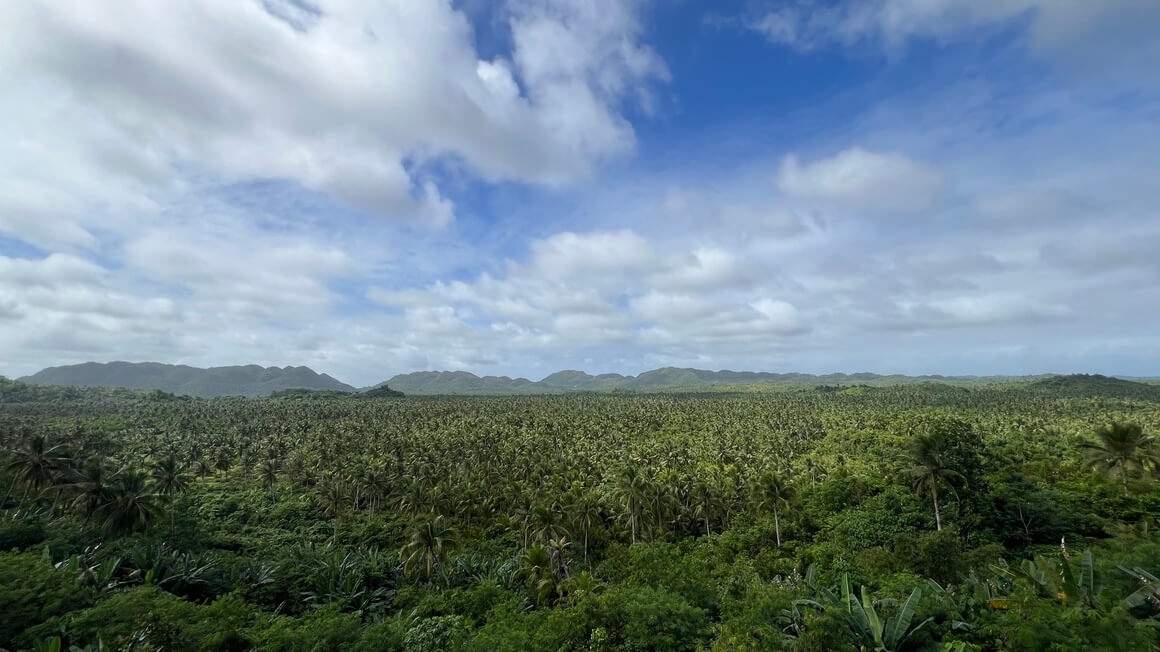
The Philippines is home to 25 active volcanoes that can be climbed to the summit. The best time to climb volcanoes is between March and June. Mt Mayon is one of the most popular and rewarding volcano climbs. Mt Pinatubo has a serene crater lake in the middle. Mt Apo has the highest peak at 2,954m. Mt Isarog will take you through jungles and waterfalls. Mt Guiting-Guiting is a strenuous 10 hour trek to the top, and Mt Kanlaon is the largest active volcano.
Kibungan Circuit is a three-mountain circuit in the town of Kibungan in Benguet. The circuit, which takes anywhere from two to three days to complete, spans across the mountains of Tagpaya, Oten, and Tagpew. Rock Climbing in the Philippines “the Manta Bowl,” famous for the majestic manta rays.
Scuba Diving The Philippines on a Liveaboard Trip
With so much epic diving to be had in the Philippines, why not take your love of diving up a notch?
Consider joining a Liveaboard trip in the Philippines!
Explore dive sites you never new existed, day after day. Eat delicious food, scuba dive, and spend you nights chilling out with other die-hard divers!
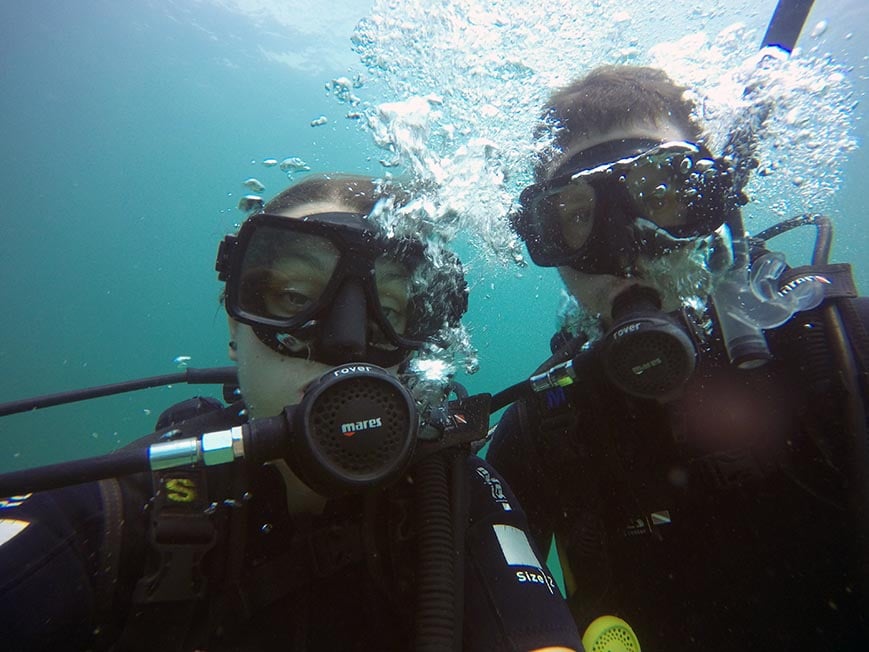
If diving inspires you, then I am sure you will love joining a Liveaboard trip and exploring some of the world’s best diving locations!
Rock Climbing in the Philippines
There are numerous places to rock climb in the Philippines and for all levels. Some of the most popular places to climb include:
Cantabaco and Poog on Cebu, the region of Sagada, sport climbing in Wawa in Montalban, Rizal and a rural village on the foothills of the Sierra Madre near Manila. Luzon and the Visayas have plenty of options too.
Joining an Organized Tour in The Philippines
For most countries, The Philippines included, solo travel is the name of the game. That said, if you are short on time, energy, or just want to be part of an awesome group of travelers you can opt to join an organized tour. Joining a tour is a great way to see a majority of the country quickly and without the effort that goes into planning a backpacking trip. However—not all tour operators are created equal—that is for sure.
G Adventures is a solid down-to-earth tour company catering to backpackers just like you, and their prices and itineraries reflect the interests of the backpacker crowd. You can score some pretty sweet deals on epic trips in The Philippines for a fraction of the price of what other tour operators charge.
Check out some of their awesome itineraries for The Philippines here…
Final Advice Before Visiting The Philippines
So there you have it amigos, everything you need to know to hit the road and begin backpacking The Philippines, so get out there already.
Got more to add to the guide? Let me know in the comments below!
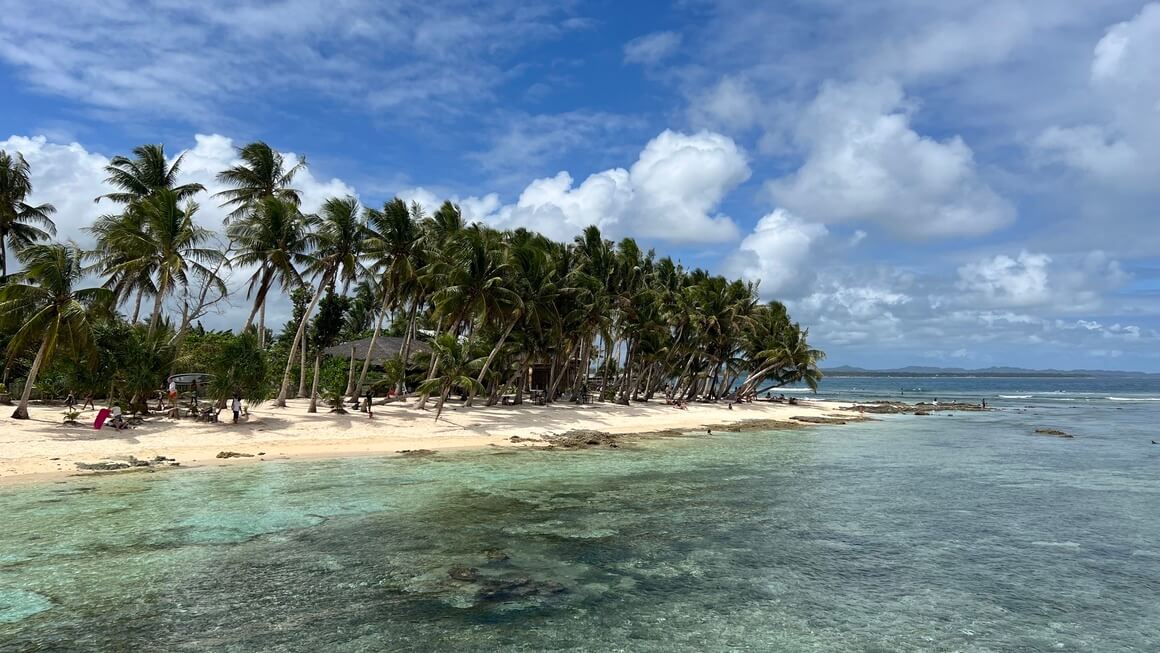
Photo: @joemiddlehurst
Buy Us a Coffee!
A couple of you lovely readers suggested we set up a tip jar for direct support as an alternative to booking through our links. So we created one!
You can now buy The Broke Backpacker a coffee. If you like and use our content to plan your trips, it’s a much appreciated way to show appreciation 🙂


